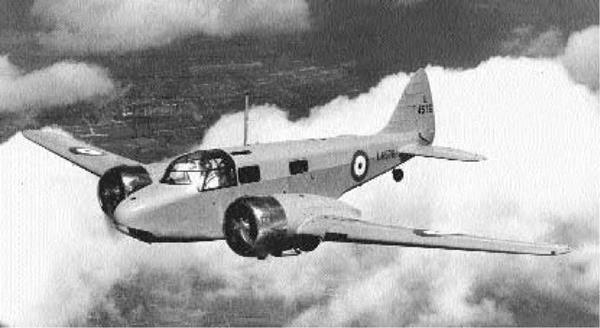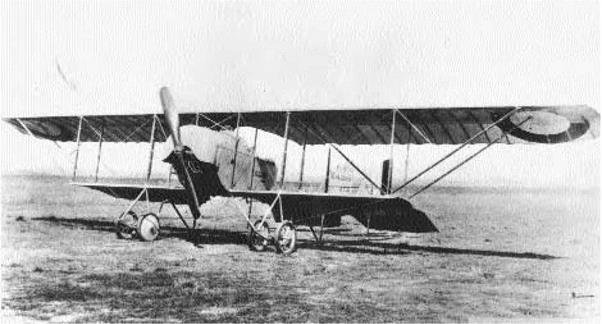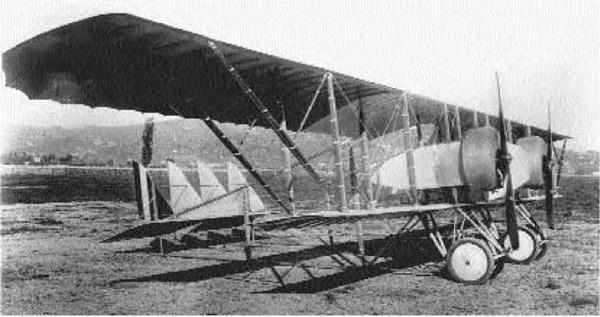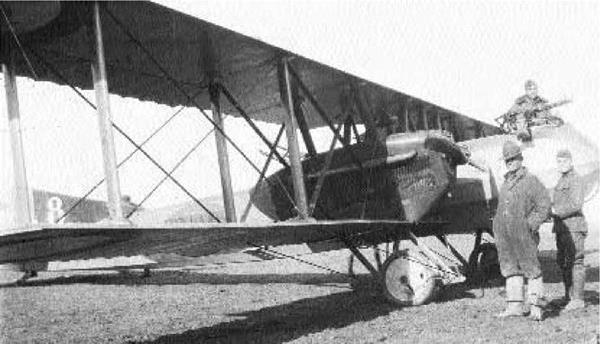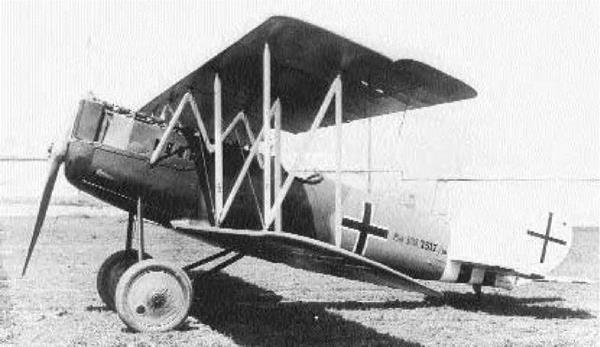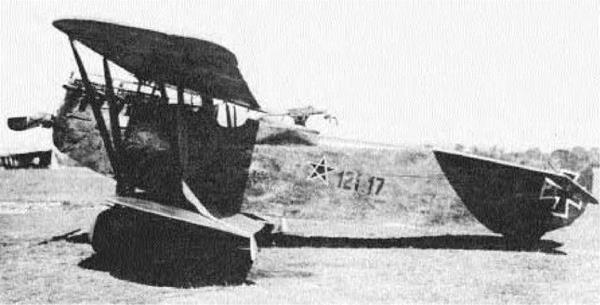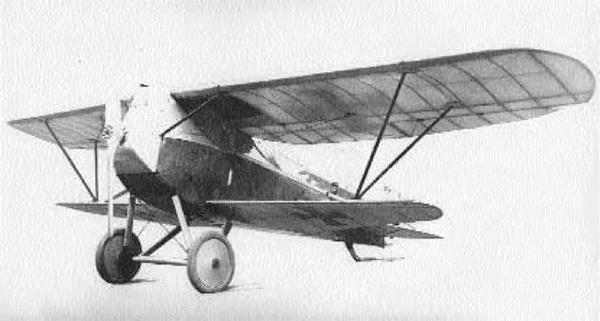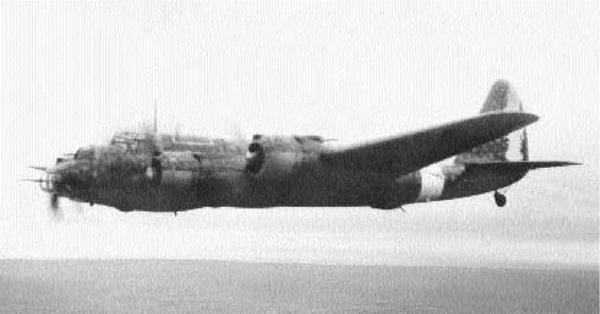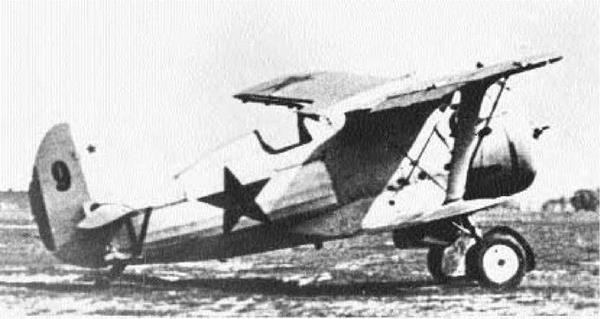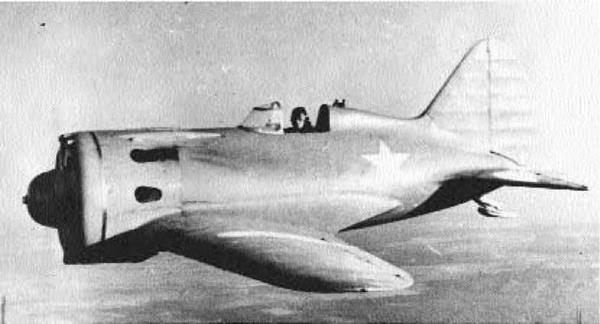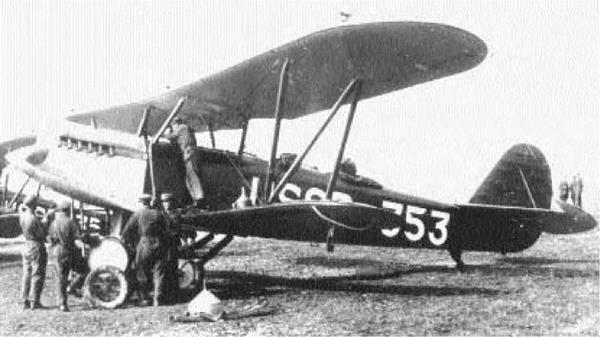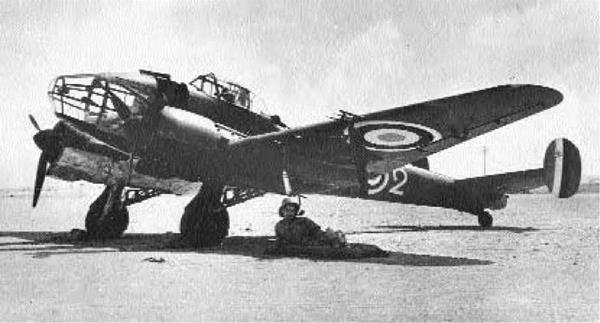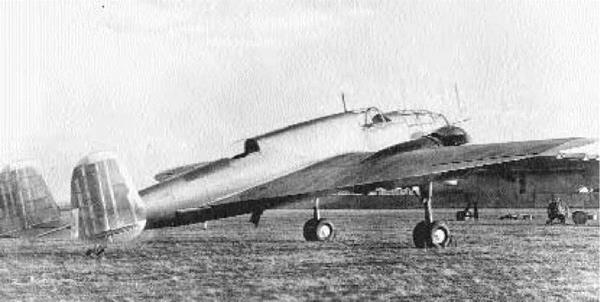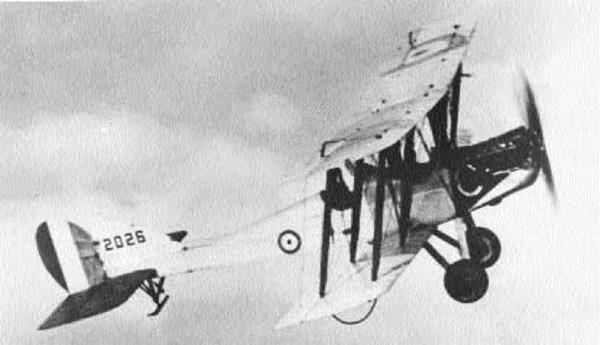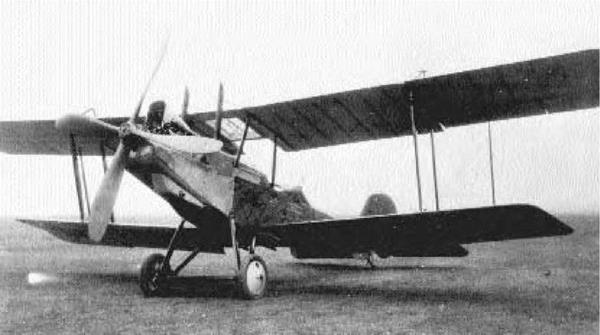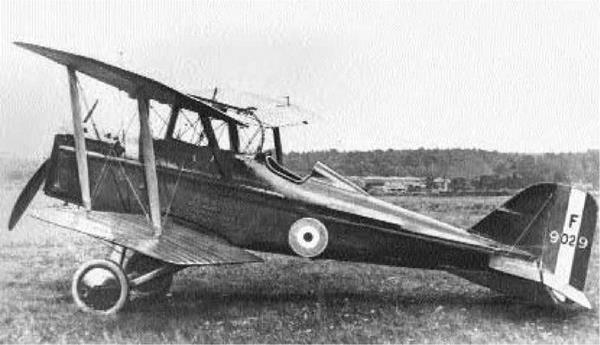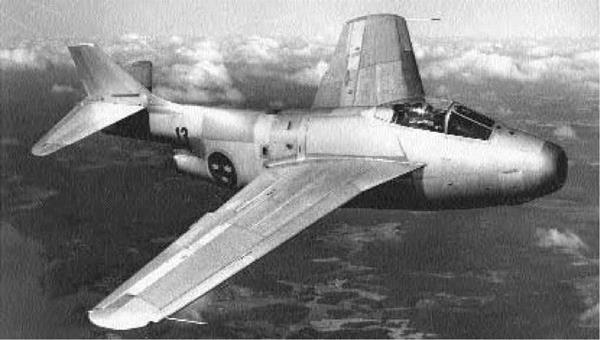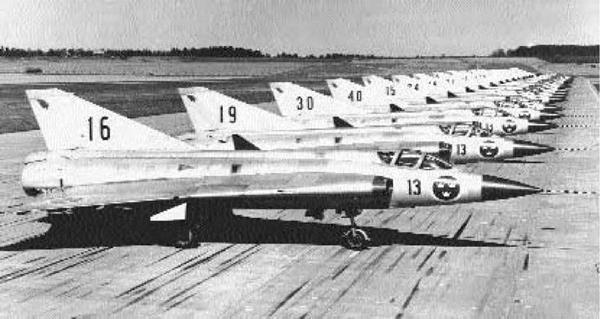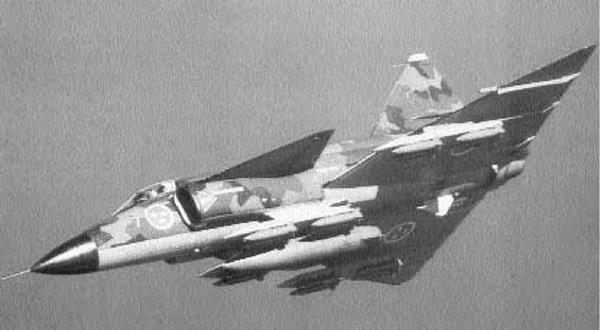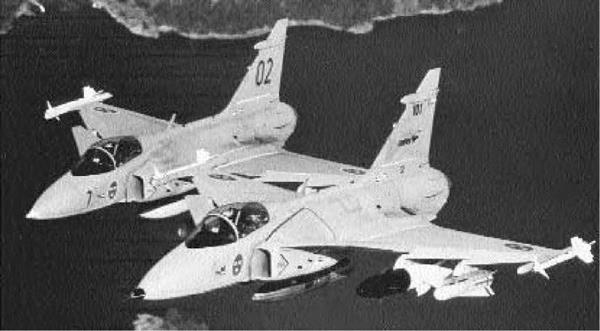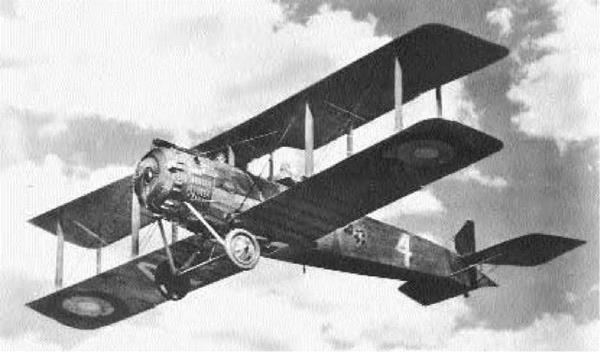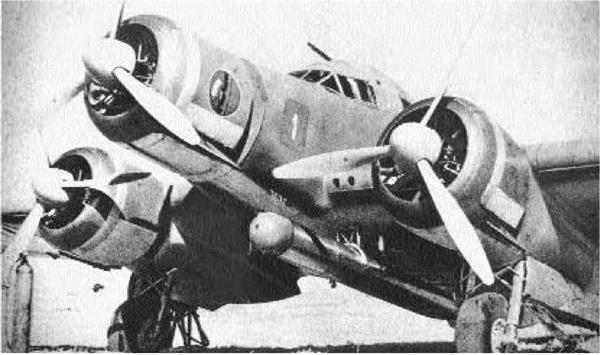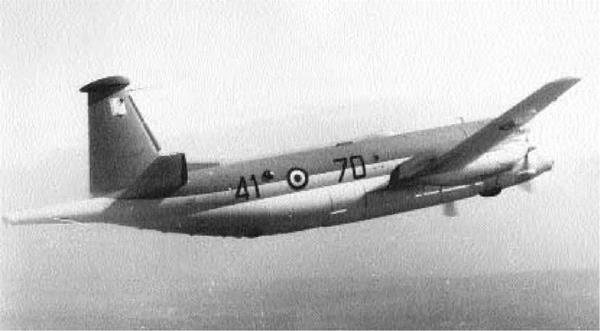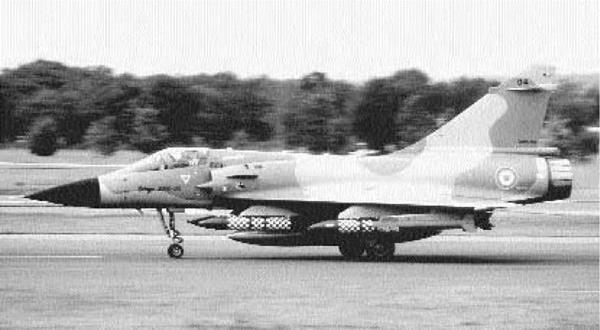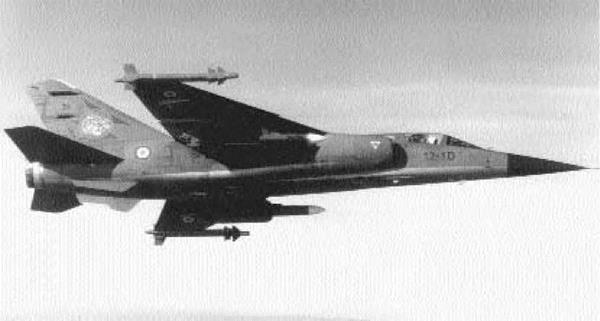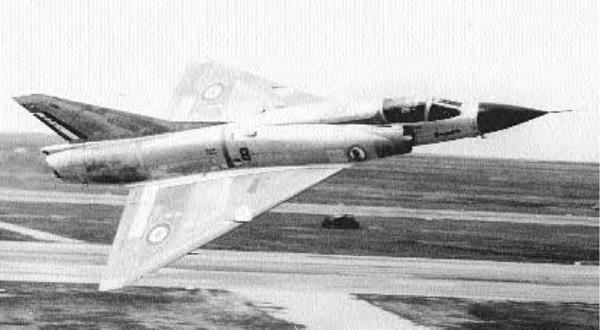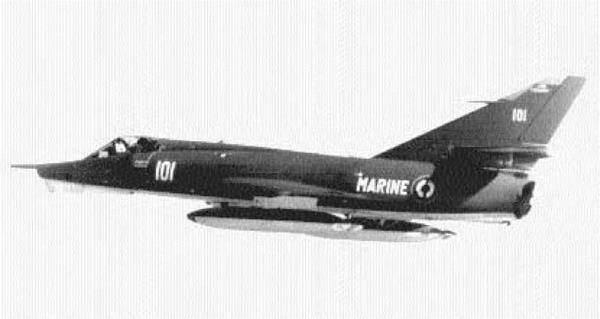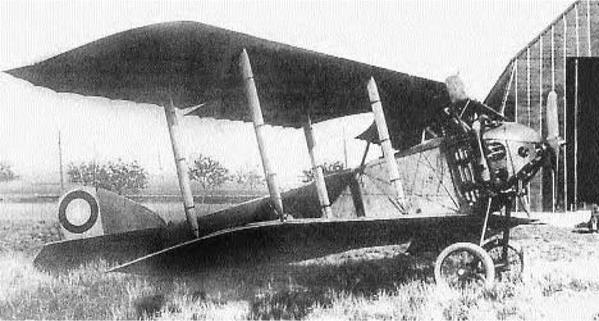Type: Medium Bomber; Transport
Dimensions: wingspan, 78 feet, 8 inches; length, 58 feet, 4 inches; height, 14 feet, 7 inches Weights: empty, 13,890 pounds; gross, 23,040 pounds Power plant: 3 x 700-horsepower Piaggio P. X radial engines
Performance: maximum speed, 211 miles per hour; ceiling, 26,240 feet; range, 1,336 miles Armament: up to 6 x 7.7mm machine guns; 2,205 pounds of bombs Service dates: 1935-1944
he handsome SM 81 was among the world’s best bombers when it first appeared. Despite growing obsolescence, they appeared wherever Italian troops fought in World War II.
In 1934 the appearance of the successful SM 73 commercial transport led to its development for military purposes. The prototype SM 81 emerged the following year with very similar lines. It was a large, low-wing monoplane in trimotor configuration, and in the course of a very long career a variety of differing engines was mounted. The craft was made of metal framework throughout, covered in fabric, and possessed two large, spatted landing gear. Although intended as a dedicated bomber, its roomy fuselage could also accommodate up to 18 fully equipped troops. SM 81s were rushed into service during the invasion of Ethiopia, where they rendered good service in bomber, transport, and reconnaissance roles. It thereafter served as the standard Italian bomber type until the appearance of the much superior SM 79s in 1937. Mussolini so liked the easy-flying
craft that he adopted one as his personal transport, and flew it regularly.
The Pipistrello (Bat) enjoyed an active service career that ranged the entire Mediterranean. They were among the first Italian aircraft to assist Franco’s Spanish Nationalist forces in 1936, performing well against light opposition. In 1940, after Italy’s entrance into World War II, the aging craft flew missions wherever Italian forces deployed. They bombed British targets in East Africa up through 1941, but the lightly armed craft took heavy losses. Thereafter, it became necessary to employ SM 81s exclusively as night bombers throughout the North African campaign. They raided Alexandria on numerous occasions but were subsequently employed in transport and other second-line duties. In 1942 alone, the 18 Stormo Traspori (transport squadron) made 4,105 flights, conveying 28,613 troops and 4.5 million pounds of supplies. A handful of SM 81s survived up to the 1943 Italian surrender, and they found service with both sides until war’s end. Production amounted to 534 machines.
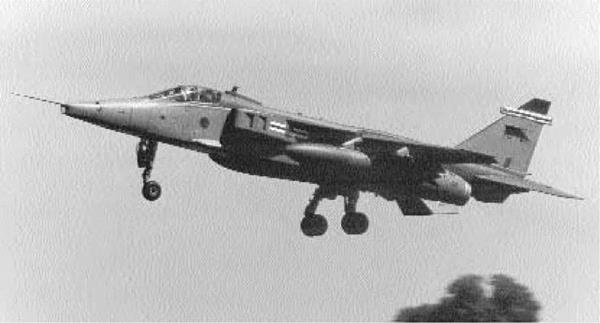
Type: Fighter; Light Bomber; Trainer
Dimensions: wingspan, 28 feet, 6 inches; length, 57 feet, 6 inches; height, 16 feet Weights: empty, 15,432 pounds; gross, 34,612 pounds
Power plant: 2 x 5,115-pound thrust Rolls-Royce Turbomeca Adour Mk 102 turbofan engines Performance: maximums peed, 1,056 mile per hour; ceiling, 45,930 feet; range, 530 miles Armament: 2 x 30mm cannons; up to 10,000 pounds of bombs and rockets Service dates: 1972-
he highly capable Jaguar is one of the most successful multinational aircraft designs. Although originally designed as a trainer, it has since matured into a potent strike fighter.
By 1965 the great expense of modern military aircraft induced France and Great Britain to enter a joint program for developing an advanced jet trainer that could also double as a ground-attack craft. At length British Aircraft Corporation (now British Aerospace, or BAe) and Breguet (now Dassault) were tasked with designing such machines on a cost – effective basis. A basic prerequisite was the ability to deliver heavy ordnance at low level, high speed, and considerable range with great accuracy. The Jaguar prototype emerged in September 1968 as a high-wing jet with a sharply streamlined profile and highly swept wings. It featured tall landing gear to facilitate ease of loading large weapons on the numerous wing hardpoints. Being powered by two high-thrust Adour turbofan engines ensured that the craft possessed good STOL (short takeoff and landing) capabilities,
even when fully loaded. The first version, the Jaguar A, was a single-seat strike fighter deployed in France in 1972. This was followed by the Jaguar E, an advanced two-seat trainer. Britain, meanwhile, received deliveries of the single-seat Jaguar GR Mk 1 and the dual-seat Jaguar B trainer. Total production of European variants reached 400 machines. Both France and Britain have also operated them abroad, during the 1991 Gulf War, in Chad, and in Mauritania. The Jaguars are currently being phased out by the more advanced Panavia Tornado, but they maintain their reputation as excellent aircraft.
The good performance and easy maintenance of the Jaguar made them ideal for the overseas market, so an export version, the Jaguar International, was created. This variant was based upon the British GR 1 and could be fitted with advanced Agave radar and Sea Eagle antiship missiles. Thus far, India has proven the biggest customer, although small orders have also been placed by Ecuador, Nigeria, and Oman.
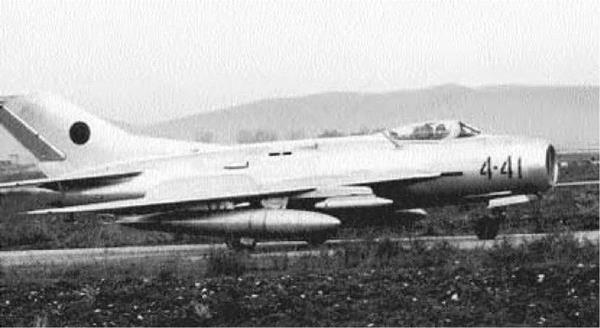
Type: Fighter; Light Bomber
Dimensions: wingspan, 30 feet, 2 inches; length, 48 feet, 11 inches; height, 12 feet, 9 inches
Weights: empty, 12,700 pounds; gross, 22,045 pounds
Power plant: 2 x 5,730-pound thrust Liming Wopen R-9BF turbojets
Performance: maximum speed, 900 miles per hour; ceiling, 58,725 feet; range, 370 miles
Armament: 2 x 30mm cannons; up to 1,100 pounds of bomb or rockets
Service dates: 1958-
he J 6 remains the single-most important aircraft in China’s arsenal. Continually improved since its inception, it remains a formidable dogfighter.
The Russian MiG 19 interceptor first flew in 1953 and subsequently became one of the world’s earliest mass-produced supersonic fighters. It was acquired in great quantities by the Soviet Union and Warsaw Pact before being supplanted by more modern MiG 21s in 1960. Two years previously, China contemplated construction of the MiG 19 under license. The craft was rugged, endowed with high performance, and exhibited excellent powers of maneuverability and climb. In 1958 the Shenyang Factory at Mukden obtained blueprints to the craft and manufactured its first example as the J 6. A handful of the craft had been turned out by the advent of the Cultural Revolution in 1961, which virtually gutted the Chinese aviation industry. Mass production could not resume until 1973; close to 3,000 have since been built. Like its Russian counterpart, the J 6 is a rakish all-metal jet with midmounted, highly
swept wings and tail surfaces. For added stability, the wings display pronounced fences across the chord. J 6s have since been fitted with a succession of more powerful engines and maintain a high-performance profile. To date it still fulfills numerous fighter, ground-attack, and reconnaissance missions within the People’s Liberation Air Force.
To improve its leverage with Third World nations, many of them desperately poor, China cultivated their friendship by offering the J 6 for export. Ready client states include Albania, Bangladesh, Egypt, and North Korea. But the most notable customer in this instance is Pakistan, which continues operating several squadrons of constantly refurbished J 6s. In combat with more advanced Indian aircraft, the redoubtable warhorse has unequivocally held its own, despite being based on obsolete technology. The J 6 and its export models will undoubtedly see continued use well into the twenty – first century. They have since received the NATO designation FARMER.
|
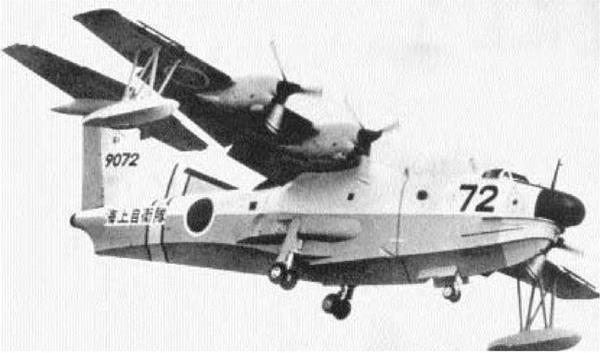
Type: Antisubmarine; Patrol-Bomber; Air/Sea Rescue
|
|
Dimensions: wingspan, 108 feet, 9 inches; length, 109 feet, 9 inches; height, 32 feet, 8 inches Weights: empty, 51,367 pounds; gross, 99,200 pounds
Power plant: 5 x 3,493-horsepower General Electric T46 turboprop engines Performance: maximum speed, 318 miles per hour; ceiling, 23,600 feet; range, 2,372 miles Armament: none Service dates: 1968-
he US 1 is the most advanced and capable flying boat ever built. Using sophisticated air boundary control technology, it can take off and land in amazingly short distances.
Japan is preponderantly a maritime nation, its destiny closely linked to control of the seas surrounding it. For this reason flying boats have always been something of a specialty in Japan’s history, and during World War II it produced some of the finest machines of that conflict. By 1965 the Japan Maritime Defense Force sought modern replacements for its Korean War-vintage Grumman UF-2 Albatroses. This was being sought for improved search-and-rescue capability, as well as antisubmarine warfare (ASW). They approached ShinMaywa (previously Shin Meiwa and, before that, Kawanishi) to develop such a machine. A team headed by Dr. Shizuo Kikuhara, who was responsible for the superb H8K Emily of World War II, responded with a large and modern four-engine craft. The PS 1 was a high-wing, all-metal monoplane with a
single-step hull and a high “T” tail. The aircraft also employed a fifth engine driving a unique air boundary control device. This vents engine gases and blows them directly against the lowered flaps, providing extra lift for takeoffs and landings. Such technology allowed the big craft to operate from relatively short distances. The hull also permits working in waves as high as 10 feet. ShinMaywa ultimately constructed 23 PS 1s, all of which were retired from ASW service in
1989.
In 1974 ShinMaywa tested the first prototype US 1, a dedicated search-and-rescue amphibian. It is outwardly identical to the earlier PS 1 save for the presence of retractable landing gear in the hull. The new craft has been stripped of all submarine detection equipment to make room for up to 36 stretchers. A maximum of 100 persons could be carried in emergency situations. A total of 13 have been acquired thus far, and a new version, the US 1kai, with improved Allison turboprop engines, is under evaluation.
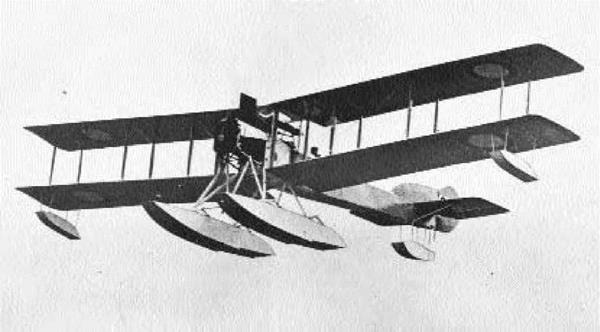
Type: Torpedo-Bomber
Dimensions: wingspan, 63 feet, 6 inches; length, 40 feet, 7 inches; height, 13 feet, 6 inches
Weights: empty, 3,703 pounds; gross, 5,363 pounds
Power plant: 1 x 225-horsepower Sunbeam liquid-cooled in-line engine
Performance: maximum speed, 88 miles per hour; ceiling, 9,000 feet; range, 150 miles
Armament: 1 x.303-inch machine gun; 1 x 14-inch torpedo
Service dates: 1915-1918
he lumbering Short 184 was an illustrious veteran of World War I with an impressive combat record. It was actively engaged in the Battle of Jutland and also launched the first aerial torpedo attack against enemy vessels.
The Short 184 had its origins in the beliefs of Commodore Murray F. Sueter, who in 1914 convinced the British Admiralty to develop an airplane capable of dropping torpedoes. This was then a revolutionary new concept. Accordingly, the Short 184 prototype flew the following year, so designated by the Admiralty practice of naming aircraft types by numbers assigned to the first example. The Short 184 was a standard, three-bay biplane of wood-and – fabric construction. The wings were extremely long, with the top ones sporting ailerons and the lower ones tipfloats. The fuselage was also somewhat attenuated and mounted two pontoon-type floats. Despite its somewhat fragile appearance, the craft handled well and could hoist a heavy torpedo aloft. A total of 650 were acquired.
The Short 184 made aviation history while attached to the floatplane tender HMS Ben-my-Chree during the Dardanelles campaign. On August 12, 1915, a Short 184 torpedoed and severely damaged a Turkish steamer. This success was repeated five days later when a steam tug was sent to the bottom, again demonstrating the validity of Sueter’s theories. During the next three years, these creaking floatplanes distinguished themselves in a variety of missions and climes. Throughout the spring of 1916, five Short 184s operated from the Tigris River at Ora, Iraq, dropping supplies to the beleaguered garrison at Kut-al-Imara. On May 31, 1916, a Short 184 conducted history’s first naval reconnaissance flight when it espied part of the German battle fleet and successfully relayed coordinates. The ubiquitous Short 184 flew from every conceivable British naval base, be it in England, the Mediterranean, the Aegean, the Red Sea, Mesopotamia, or the French coast. They retired from British service after the war, but several examples were operated by Greece and Estonia as late as 1933.
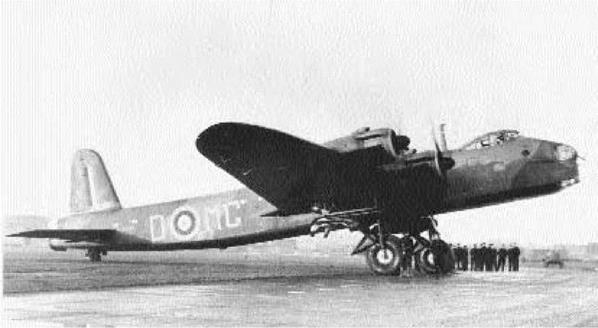
Type: Heavy Bomber
Dimensions: wingspan, 99 feet, 1 inch; length, 87 feet, 3 inches; height, 22 feet, 9 inches
Weights: empty, 43,200 pounds; gross, 70,000 pounds
Power plant: 4 x 1,650-horsepower Bristol Hercules XVI radial engines
Performance: maximum speed, 270 miles per hour; ceiling, 17,000 feet; range, 2,010 miles
Armament: 8 x.303-inch machine guns; up to 14,000 pounds of bombs
Service dates: 1941-1945
he slab-sided Stirling was Britain’s first strategic bomber and the first to achieve operational status during World War II. Visually impressive, it suffered from poor altitude performance and was eventually eclipsed by the Avro Lancaster and Handley Page Halifax.
In 1936 the British air staff sought acquisition of its first strategic bomber, so the Air Ministry issued Specification B.12/36 for a four-engine aircraft. Several prototypes were entered by different firms, but Short’s model proved the most successful. It was a large, high-wing monoplane with smooth, stressed skin. The fuselage was rather long, was slab-sided, and housed three power turrets for defense. Because the wing was so far off the ground, enormous landing gear were required, causing the aircraft to appear larger than it actually was. A potential problem was the wingspan. Because ministry specifications mandated that the new craft should fit into existing hangars, its wings could not exceed 100 feet. Thus, the Stirling, which was rather large, always suffered from insufficient lift.
Nonetheless, the decision was made to acquire the bomber in 1939, and within two years the first squadrons were outfitted.
In service the Stirling enjoyed a rather mixed record. The big craft was structurally sound and, at low altitude, quite maneuverable for its size. However, its short wing enabled it to reach barely 17,000 feet while fully loaded—an easy target for antiaircraft batteries and enemy fighters. Another unforeseen shortcoming was the bomb bay, which was constructed in sections and could not accommodate ordnance larger than 2,000 pounds—the largest weapon available in 1938. Thus, unlike the Hali- faxes and Lancasters that followed, its utility as a strategic weapon was decidedly limited. Stirlings nonetheless performed good service with RAF Bomber Command until 1944, when they were relegated to secondary tasks. Foremost among these was glider-towing, which they extensively performed at Normandy in June 1944. By 1945 Stirlings had flown 18,446 sorties and dropped 27,281 tons of bombs. A total of 2,373 were constructed.
|
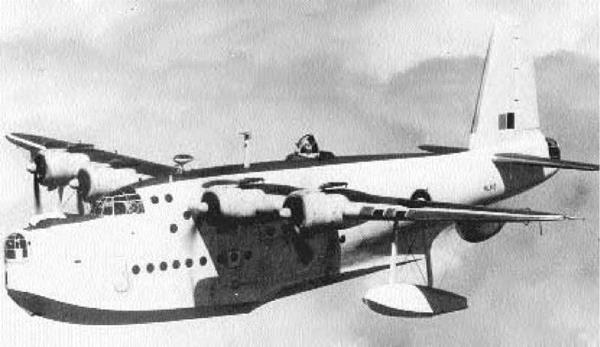
Type: Patrol-Bomber
|
|
Dimensions: wingspan, 112 feet, 9 inches; length, 85 feet, 3 inches; height, 32 feet, 10 inches Weights: empty, 37,000 pounds; gross, 65,000 pounds
Power plant: 4 x 1,200-horsepower Pratt & Whitney R-1830 Twin Wasp radial engines Performance: maximum speed, 213 miles per hour; ceiling, 17,900 feet; range, 2,980 miles Armament: 10 x.303-inch machine guns; 2,000 pounds of bombs Service dates: 1938-1959
he large, graceful Sunderland was among World War Il’s best flying boats. Because it bristled with armament, the Germans regarded it as the “Flying Porcupine.”
The advent of successful Short Empire C-class flying boats in 1933 persuaded the British Air Ministry to consider its adoption for military purposes. That year it issued Specification R.2/33 to replace the aging biplane flying boats with a new monoplane craft. The prototype Sunderland was heavily based upon the civilian craft when it first flew in 1937. It was a high-wing, four-engine airplane with stressed- skin construction and a very deep, two-step hull. The spacious hull of the Sunderland allowed for creature comforts not associated with military craft. These included comfortable bunks, wardrooms, and a galley serving hot food, all of which mitigated the effects of 10-hour patrols. The craft was also the first flying boat fitted with powered gun turrets in the nose, dorsal, and tail positions, as well as the first to carry antishipping radar. Despite its bulk, the
Sunderland handled well in both air and water and became operational in 1938. World War II commenced the following year, and Sunderlands ultimately equipped 17 Royal Air Force squadrons.
This capable aircraft played a vital role in the ongoing battles in the Atlantic. They cruised thousands of miles over open ocean, providing convoy escorts and attacking U-boats whenever possible. The first submarine kill happened in January 1940 when a Sunderland forced the scuttling of U-55. The big craft, by flying low to the water, could also defend itself handily. On several occasions, Sunder – lands beat off roving bands of Junkers Ju 88s with considerable loss to the attackers. The Germans held the big craft in such esteem that they nicknamed it the Stachelschwein (Porcupine). Sunder – lands performed useful service in the Atlantic and Pacific theaters throughout the war. They were retained in frontline service until 1959, giving them— at 21 years—the longest service record of any British combat type. A total of 721 were built.
|
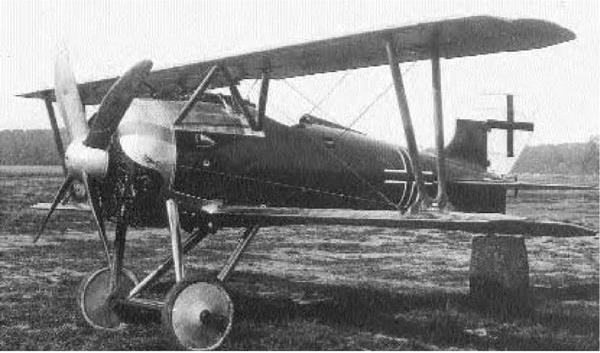
Type: Fighter
|
|
Dimensions: wingspan, 27 feet, 4 inches; length, 18 feet, 8 inches; height, 8 feet, 11 inches
Weights: empty, 1,190 pounds; gross, 1,620 pounds
Power plant: 1 x 160-horsepower Siemens-Halske rotary engine
Performance: maximum speed, 118 miles per hour; ceiling, 26,240 feet; range, 250 miles Armament: 2 x 7.92mm machine guns Service dates: 1918-1919
he barrel-chested Siemens-Schuckert D III and D IV were among the finest fighters developed during World War I. At high altitude they possessed superior performance to the legendary Fokker D VII.
Since 1916 the famous Siemens-Schuckert Werke firm had been experimenting with numerous rotary-engine fighter designs. Eventually the program came under the sway of designer Harald Wolf, who originated a unique aircraft suitable for the large Siemens-Halske Sh III rotary engine. Called the D III, it was a squat, barrel-chested machine possessing rather sleek lines. It had two-bay wings of conventional wooden construction, with the upper wing of considerably lower chord than the lower one. The massive engine was completely enclosed by a close-fitting cowling and drove a four-blade propeller. To counteract strong torque forces, the right wing was actually four inches longer than the left. In sum, this was a compact, powerful design of unusual military promise.
In the winter of 1917 small batches of D IIIs arrived at the front for evaluation under combat
conditions. Pilots were awed by its aerial agility and phenomenal climb. In level flight, however, it was somewhat slower than other fighters, and the SH III engine was prone to overheating. Engine seizures were frequent, and by February 1918 all 20 D IIIs returned to the factory for modifications. They reappeared at the front by summer, along with 60 production models, having the lower part of their cowling cut off to facilitate cooling.
Concurrently, an improved version, the D IV, was also under development. Outwardly this model appeared identical to the D III, but it possessed a redesigned top wing and a large spinner with cooling louvers. These modifications endowed the D IV with greater speed and even faster climb. By the fall of 1918 a total of 118 had been constructed, which equipped four squadrons. In service the D IVs proved the only German fighter capable of tackling the formidable Sopwith Camels and Snipes on equal terms. In 1919 several examples were flown by German against Bolshevik forces in the Baltic.
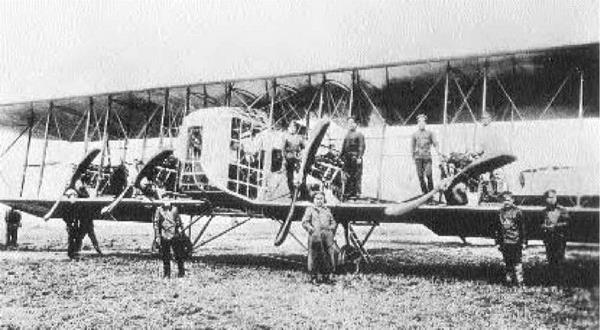
Type: Heavy Bomber
Dimensions: wingspan, 97 feet, 9 inches; length, 56 feet, 1 inch; height, 15 feet, 6 inches
Weights: empty, 8,378 pounds; gross, 12,125 pounds
Power plant: 4 x 150-horsepower Sunbeam liquid-cooled in-line engines
Performance: maximum speed, 85 miles per hour; ceiling, 10,500 feet; range, 435 miles
Armament: 7 x 7.7mm machine guns; 2,200 pounds of bombs
Service dates: 1914-1924
he massive Ilya Muromets was the world’s first four-engine bomber—and a good one at that. In three years it dropped 2,200 tons of bombs on German positions, losing only one plane in combat.
In 1913 the Russo-Baltic Wagon Works constructed the world’s first four-engine aircraft under the direction of Igor Sikorsky. Dubbed the Russki Vi – tiaz (Russian Knight), it was also the first to mount a fully enclosed cabin. This giant craft safely completed 54 flights before being destroyed in a ground accident. In 1914 Sikorsky followed up his success by devising the first-ever four-engine bomber and christened it Ilya Muromets after a legendary medieval knight. The new machine possessed straight, unstaggered, four-bay wings with ailerons only on the upper. The fuselage was long and thin, with a completely enclosed cabin housing a crew of five. On February 12, 1914, with Sikorsky himself at the controls, the Ilya Muromets reached an altitude of 6,560 feet and loitered five hours while carrying 16 passengers and a dog! This performance, unmatched any
where in the world, aroused the military’s interest, and it bought 10 copies as the Model IM.
After World War I commenced in 1914, Sikorsky went on to construct roughly 80 more of the giant craft, which were pooled into an elite formation known as the Vozdushnykh Korablei (Flying Ships) Squadron. On February 15, 1915, they commenced a concerted, two-year bombardment campaign against targets along the eastern fringes of Germany and Austria. The Ilya Muromets carried particularly heavy loads for their day, with bombs weighing in excess of 920 pounds. This sounds even more impressive considering that ordnance dropped along the Western Front was usually hurled by hand! The mighty Russian giants were also well-built and heavily armed. In 422 sorties, only one was lost in combat, and only after downing three German fighters. Operations ceased after the Russian Revolution of 1917, with many bombers being destroyed on the ground. A handful of survivors served the Red Air Force as trainers until 1922.
|
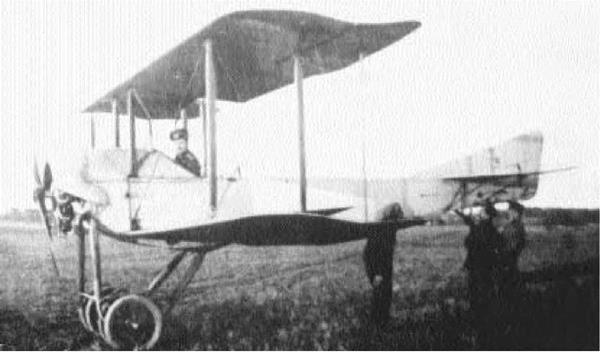
Type: Fighter; Reconnaissance
|
|
Dimensions: wingspan, 27 feet, 6 inches; length, 20 feet, 4 inches; height, 9 feet, 1 inch
Weights: empty, 897 pounds; gross, 1,490 pounds
Power plant: 1 x 80-horsepower Gnome air-cooled rotary engine
Performance: maximum speed, 73 miles per hour; ceiling, 11,482 feet; range, 200 miles
Armament: up to 2 x 7.62mm machine guns
Service dates: 1916-1924
he diminutive S 16 was one of the earliest fighters to mount forward-firing interrupter gear. A mediocre craft, its robust construction permitted useful service under very harsh operating conditions.
The Russo-Baltic Wagon Factory had gained considerable renown through the efforts of its chief engineer, Igor I. Sikorsky. His four-engine Ilya Muromets bombers were among the most advanced in the world, and in the spring of 1914 he was instructed to design an escort fighter to assist the giant craft. The prototype emerged in February 1915 as the S 16. This was a small machine of conventional appearance and construction. It possessed a wire-braced wooden fuselage and a spacious cockpit for two crewmen. The single bay wings were affixed to the fuselage by dual struts, and the craft was built entirely of wood and canvas covering. The S 16 was originally designed to be powered by a 100- horsepower Gnome Monosoupape rotary engine, but shortages necessitated using a smaller, 80-horsepower version. Consequently, the S 16, which pos
sessed excellent flying characteristics, remained slow and underpowered. However, it was unique in mounting robust, four-wheeled landing gear. These allowed operations from the plowed fields that Russian forces utilized as airstrips. In winter, the S 16 could also be fitted with skis.
The S 16 was only marginally successful, but it is notable in being among the first Allied aircraft to utilize Russian-designed interrupter gear for machine guns to fire through the propeller arc. This system, conceived by naval Lieutenant G. I. Lavrov, was somewhat faulty (as were most early systems) and was usually complemented by a second, wing – mounted gun firing over the propeller. Only 34 S 16s were built by 1917, but they saw widespread service as reconnaissance craft. They were also deemed unsatisfactory for escorting the giant Ilya Muromets bombers, which proved very capable at defending themselves. After the Russian Revolution, the surviving S 16s were impressed into the Red Air Force as trainers. They dutifully served until being retired in 1924.
|
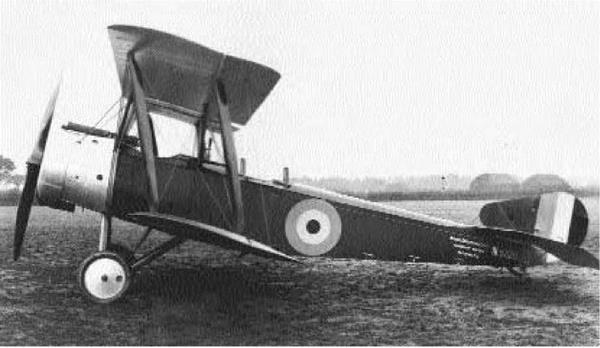
Type: Fighter; Light Bomber; Reconnaissance
|
|
Dimensions: wingspan, 33 feet, 6 inches; length, 25 feet, 3 inches; height, 10 feet, 3 inches Weights: empty, 1,259 pounds; gross, 2,150 pounds Power plant: 1 x 130-horsepower Clerget rotary engine
Performance: maximum speed, 106 miles per hour; ceiling, 15,000 feet; range, 400 miles Armament: 2 x.303-inch machine guns; up to 230 pounds of bombs Service dates: 1916-1918
opwith 1 1/2 Strutters sported several technical innovations for their time and were exceptionally fine-looking aircraft. They compiled an exemplary combat service record in World War I as fighters, bombers, and scouts.
In 1915 the British Admiralty issued new specifications for a two-seat fighter, the first British tractor- type equipped with a synchronized machine gun for firing through the propeller arc. Sopwith completed the prototype in December of that year as a handsome, two-bay biplane powered by a rotary engine. In fact, the new craft sported two interesting innovations. The first was a form of air brake, consisting of two square sections on the lower wing that were hinged and could be lowered upon landing. The second was a variable-incidence tailplane that allowed the craft to be trimmed in flight. Like all Sopwith machines, the new Type 9400 was delightful to fly, responsive, and maneuverable. It was also heavily armed for its day, mounting both a forward-firing machine gun for the pilot and a ring-mounted weapon for the observer. Production began the following
spring; the first units reached the front in April 1916. Crews immediately dubbed it the 1 1/2 Strutter on account of the “W”-shaped inboard struts.
Strutters were operated by both Royal Flying Corps and Royal Naval Air Service units and acquired a jack-of-all-trades reputation. They initially functioned as escort fighters and enjoyed considerable success, for very few two-seat aircraft were armed with interrupter gear. By that fall the newly arrived Albatros D I and Halberstadt fighters terminated this role, for the craft was too stable for violent defensive maneuvers. Fortunately, their versatility made them excellent bombing platforms, and several hundred single-seat versions were deployed by both services. The British ultimately constructed 1,513 Strutters, but its biggest customer was France, which manufactured an additional 4,500 machines. They were also employed by the American Expeditionary Force, which purchased 514 machines to serve as trainers in 1918. Strutters continued to function in various capacities until supplanted by more advanced types in 1918.
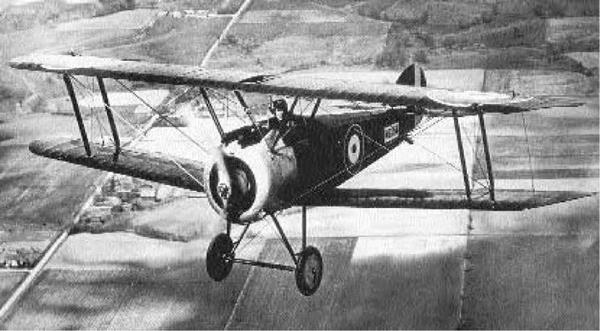
Type: Fighter
Dimensions: wingspan, 28 feet; length, 18 feet, 9 inches; height, 8 feet, 6 inches Weights: empty, 929 pounds; gross, 1,453 pounds Power plant: 1 x 140-horsepower Clerget rotary engine
Performance: maximum speed, 113 miles per hour; ceiling, 19,000 feet; range, 200 miles Armament: 2 x.303-inch machine guns Service dates: 1917-1919
he immortal Camel was the finest British fighter of World War I. A snubbed-nosed dervish, it helped wrest air superiority away from Germany and counted among its victims the legendary Manfred von Richthofen (the Red Baron).
Development of a new fighter to succeed the Sopwith Pup commenced in 1916 when Herbert Smith conceived a machine capable of greater maneuverability. He accomplished this by placing the heaviest parts—the engine, armament, and pilot— all within 8 feet of the nose section. This arrangement, coupled with the tremendous torque generated by a Clerget rotary engine, gave the ensuing Sopwith F1 fighter unparalleled turning ability. It was also the first British fighter designed to be equipped with twin Vickers machine guns firing through the propeller arc. These were closely enclosed in a distinctive hump that inspired the nickname Camel.
The Camel was unlike any British fighter to date and certainly differed from the Sopwith designs preceding it. Whereas the famous Pup and Triplane designs possessed gentle, almost sedate characteris
tics, the new machine was both unstable and unforgiving. These attributes rendered it a first-class fighter in the hands of an experienced pilot, for the Camel could outturn any German aircraft except the vaunted Fokker Dr I triplane. However, novice pilots found it a vicious handful and dangerous to fly, for careless turning inevitably led to fatal spins. Attrition among beginning pilots was appreciable high, but those who mastered the craft managed to shoot down an estimated 1,300 German airplanes, more than any other Allied fighter. Among the many victims was Baron von Richthofen himself, purportedly bagged by Captain Roy Brown of Naval Squadron No. 209 on April 21, 1918. A total of 5,490 Camels were built, including the 2 F1, a navalized version featuring shorter wings and a detachable fuselage for shipboard storage. Like its Royal Flying Corps counterparts, the navy Camels fought tenaciously, scored well, and even claimed the last Zeppelin shot down during the war. The mighty Sopwiths were all retired within months of the November 1918 Armistice and were replaced by an even finer machine, the Snipe. It remains a classic British warplane.
|
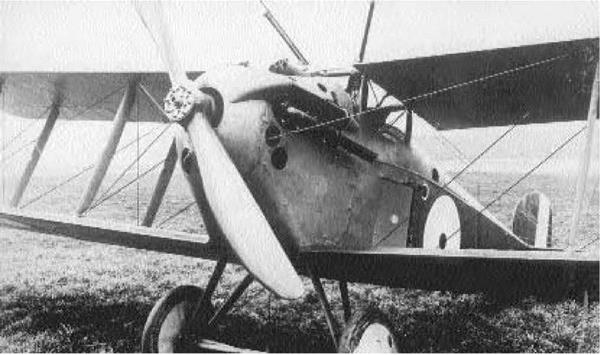
Type: Fighter; Light Bomber
|
|
Dimensions: wingspan, 32 feet, 6 inches; length, 22 feet, 3 inches; height, 8 feet, 6 inches Weights: empty, 1,391 pounds; gross, 2,008 pounds
Power plant: 1 x 200-horsepower Hispano-Suiza Vee liquid-cooled in-line engine Performance: maximum speed, 112 miles per hour; ceiling, 20,000 feet; range, 250 miles Armament: up to 4 x.303-inch machine guns; 100 pounds of bombs Service dates: 1918-1919
he ungainly Dolphin was the first multigun British fighter ever produced. It had fine high-altitude performance but, ironically, performed more useful work on the deck.
In 1917 Sopwith commenced work on a fighter that maximized vision and firepower at the expense of maneuverability. The new craft was an even bigger departure from traditional company norms in that it utilized an in-line, not rotary, engine. The prototype emerged in May 1917 and immediately raised eyebrows. The wings of equal length were set back in a negative stagger to afford the pilot greater frontal view. To that end, the top wing’s center section was also cut out and mounted low to the fuselage, allowing the pilot’s head to protrude. This afforded him a splendid field of vision but also guaranteed a broken neck—or worse—in the event of a noseover. The in-line motor gave the deep fuselage a rather pointed profile and mounted outboard radiators on either side. The armament was also worthy of note. In addition to two synchronized ma
chine guns in front, it possessed a pair of drum-fed Lewis machine guns mounted at an angle over the pilot’s enclosure. This craft, christened the 5F1 Dolphin, displayed excellent flying qualities, especially at high altitude, and the decision was made to enter production. Within a year 1,532 had been acquired.
Dolphins reached France in the spring of 1918 and were immediately viewed with suspicion. The geared Hispano-Suiza engine caused endless difficulties, and—owing to the wing arrangement—its stall characteristics caused many accidents. But pilots came to appreciate the fine high-altitude performance of the Dolphin and its robust construction. Curiously, many squadrons found the twin Lewis guns burdensome and discarded them altogether. Dolphins functioned as fighters for several months but found even greater success as ground-attack craft. Armed with four 25-pound bombs, they proved extremely effective at dispersing infantry formations. The novel Sopwiths served well until war’s end and were phased out of service the following year.
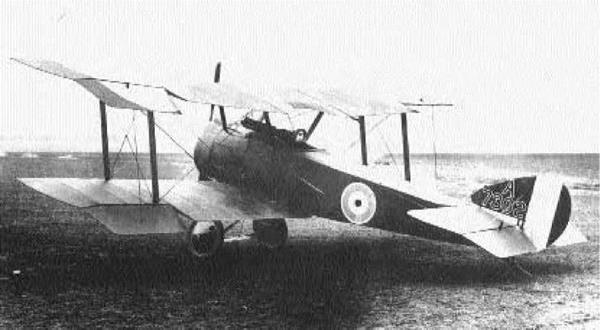
Type: Fighter
Dimensions: wingspan, 26 feet, 6 inches; length, 19 feet, 3 inches; height, 9 feet, 5 inches
Weights: empty, 790 pounds; gross, 1,225 pounds
Power plant: 1 x 80-horsepower Gnome Monosoupape rotary engine
Performance: maximum speed, 111 miles per hour; ceiling, 17,500 feet; range, 310 miles
Armament: 1 x.303-inch machine gun
Service dates: 1916-1917
hen first introduced, the elegant Pups were hailed as the most perfect flying machines of their day. They were also capable dogfighters and compiled an astonishing combat record.
In 1915 Sopwith’s Herbert Smith decided to produce a new fighter based on a personal aircraft owned by test pilot Harry Hawker. The resulting prototype looked like a scaled-down, single-seat version of the already capable 1 1/2 Strutter. It was a small, handsome craft driven by a rotary engine and constructed of wood and fabric. This new Model 9901 possessed broad wings of equal length, a reduced center section to improve pilot vision, and the same distinctive inboard struts as the 1 1/2 Strutter. This close visual association gave rise to the craft’s popular name—the “pup” of the previous airplane. Although distinctly underpowered, the Pup was in every respect a pilot’s machine. It was docile yet sensitive, and by virtue of very low wing loading it was able to maintain altitude during violent acrobatic maneuvering. The tidy craft equipped several
naval squadrons and arrived in France during the spring of 1916.
In combat, the pugnacious Pup became the terror of the Western Front. It tackled the feared Al – batros scouts with ease and outflew them at high altitude. The Royal Flying Corps was then hard – pressed owing to heavy casualties, and a number of Pup-equipped Royal Navy squadrons were dispatched to assist. The most famous of these, Naval Eight, flew for only three months and accounted for 20 enemy craft. Having themselves received the Pup, air corps units also asserted their superiority at great expense to the enemy. The diminutive plane gained further distinction by participating in landing experiments aboard the carrier HMS Furious. On August 2, 1917, a Pup flown by Commander F. J. Rutland became the first land plane to touch down on a moving ship at sea. By the fall of 1917, the splendid little Sopwiths were gradually withdrawn and replaced by the newer Camels and Royal Aircraft Factory SE 5s. A total of 1,770 had been manufactured.
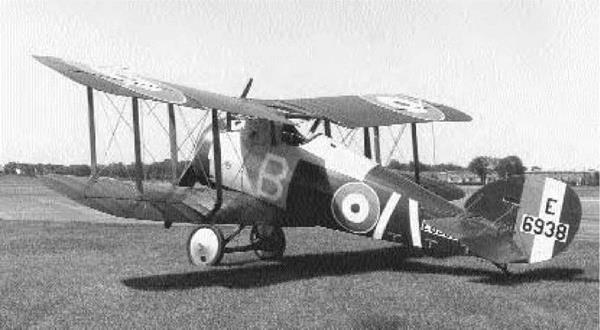
Type: Fighter
Dimensions: wingspan, 30 feet, 1 inch; length, 19 feet, 9 inches; height, 9 feet, 6 inches
Weights: empty, 1,312 pounds; gross, 2,020 pounds
Power plant: 1 x 230-horsepower Bentley BR 2 rotary engine
Performance: maximum speed, 121 miles per hour; ceiling, 20,000 feet; range, 300 miles Armament: 2 x.303-inch machine guns Service dates: 1918-1926
ad World War I endured beyond the November 1918 Armistice, the Snipe might have gained renown as the best all-around fighter of the war. Accordingly, it served as the last rotary-engine airplane of the postwar period.
Throughout 1917 Herbert Smith worked on a more powerful successor to his already famous Camel. The new craft shared similar outlines with its predecessor but was built around the new 230- horsepower Bentley BR 2 rotary engine. Several prototypes were built, flown, and successively modified until rendered proficient. The 7F1 Snipe, as it was named, was a four-bay biplane design with a short fuselage and relatively long wings. Unlike the Camel, both wings were given several degrees of dihedral, and the top one had its center section reduced to improve pilot vision. The slab-sided fuselage of the former had also given way to a rounder, more streamlined form. And like its precursor, the Snipe possessed twin machine guns in a distinctive fairing over the engine, only now the hump was even more pronounced. Flight-testing concluded success
fully, and production commenced in the spring of 1918.
Only 200 Snipes had been completed by the time of the Armistice, equipping three squadrons. Nonetheless, the new fighter quickly gained repute as being quite possibly the best aircraft of its class during the war. It climbed better than the Camel, retained all the legendary maneuverability, and possessed none of the latter’s vicious spin characteristics. These traits were summarily displayed on October 27, 1918, when a Snipe flown by Canadian Major W. G. Barker single-handedly engaged 15 superb Fokker D VIIs, gaining him the Victoria Cross.
After the war, Snipes continued on as the first major Royal Air Force service fighter. Given their great aerial agility, they remained standard fare at aviation shows throughout the early 1920s, although their rotary-engine technology was approaching obsolescence. By 1926 the weary Snipes had been eclipsed by newer radial-engine fighters like the Gloster Grebe and the Armstrong-Whitworth Siskin. Production totaled 2,103 machines.
|
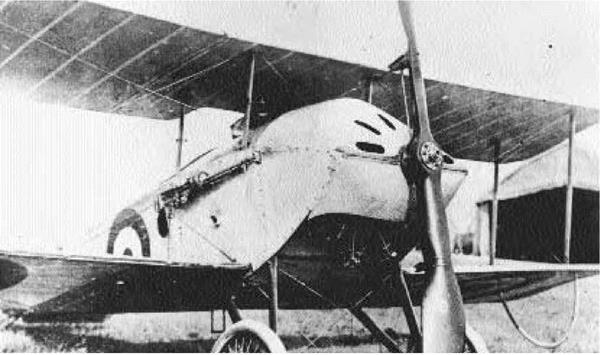
Type: Reconnaissance; Light Bomber
|
|
Dimensions: wingspan, 25 feet, 6 inches; length, 20 feet, 4 inches; height, 8 feet, 5 inches Weights: empty, 720 pounds; gross, 1,120 pounds Power plant: 1 x 80-horsepower Gnome rotary engine
Performance: maximum speed, 93 miles per hour; ceiling, 15,000 feet; range, 300 miles Armament: none Service dates: 1914-1915
he Tabloid was a fast, groundbreaking design of the early aviation era. In 1914 it became the first single-seat scout to enter military service and also made the first successful air raid on German soil.
In 1913 Tommy Sopwith established a small aircraft firm at Kingston-upon-Thames and commenced his lifelong ambition of designing airplanes. His first effort was a small racing biplane named the Tabloid that possessed amazing performance for its day. It was a standard two-bay biplane constructed when monoplanes seemed the future of aviation. Of standard wood-and-fabric construction, it sported a neatly fitting metal cowl and a broad fuselage seating two occupants side by side. The wings were rake-tipped and utilized warping for lateral control. When Harry Hawker flew the Tabloid at the Hendon Air Show on November 29, 1913, he reached a blazing 93 miles per hour and climbed 1,200 feet a minute while carrying a passenger and two and a half hours of fuel! Such outstanding performance quickly garnered military attention, and shortly before World War I the nifty biplane was acquired in
small numbers by both the Royal Flying Corps and the Royal Naval Air Service. Around 40 were built, modified to carry ailerons.
Military aircraft at this juncture were little more than civilian flying contraptions pressed into service. However, the speedy Tabloids were among the first aircraft dispatched to France and soon commenced reconnaissance operations. The craft was never formally armed, but on one occasion a Tabloid piloted by Lieutenant Norman Spratt forced a German machine down by constantly circling it! A more ominous action transpired on October 8, 1916, when two Tabloids flown by Commander Spenser Gray and Lieutenant Marix conducted the first allied bomb run over Germany. Spenser became lost in the mist and dropped his small bombs on the Cologne railway station, but Marix enjoyed spectacular success by destroying Zeppelin Z IX in its shed. Following some brief Mediterranean service, the famous Tabloids were finally retired. But Tommy Sopwith had made his mark and went on to become a renowned aircraft manufacturer.
|
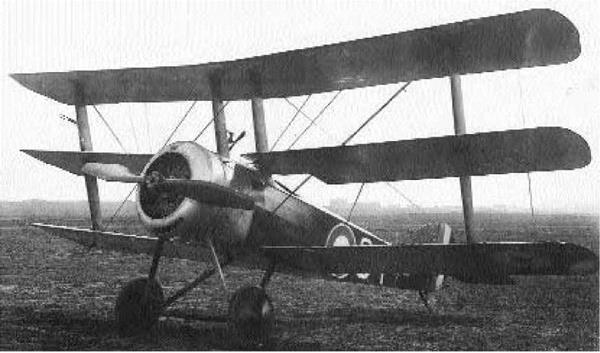
Type: Fighter
|
|
Dimensions: wingspan, 26 feet, 6 inches; length, 18 feet, 10 inches; height, 10 feet, 6 inches Weights: empty, 1,101 pounds; gross, 1,541 pounds Power plant: 1 x 130-horsepower Clerget rotary engine
Performance: maximum speed, 117 miles per hour; ceiling, 20,500 feet; range, 250 miles Armament: 1 x.303-inch machine gun Service dates: 1917
oming on the heels of the vaunted Pup, the Sopwith Triplane was an even bigger surprise to the Germans. The little Tripehound was faster and could outturn and outclimb the Albatros scouts with ease.
The Sopwith Triplane originated when Herbert Smith attempted to wring even more maneuverability out of his exiting Pup design. The prototype flew in May 1916 and shared some outward similarities with the earlier machine, but little else. Like the Pup, the Triplane was compact and good-looking. It employed three wings of equal length, but each was fitted with an aileron to enhance turning and roll rates. Being a triplane, the wings were also of less chord, which gave the pilot better fields of vision. The fuselage was conventionally built of wood and fabric with the engine, armament, fuel, and pilot concentrated toward the front. This arrangement, in concert with torque forces from the spinning rotary engine, contributed to its very sharp turning rate. Trial flights were successful, and the Triplane was
ordered in quantity for both the Royal Flying Corps and the Royal Naval Air Service. A majority of the 140 Triplanes constructed were flown by navy pilots, who dubbed it the Tripehound.
The little Sopwiths appeared on the Western Front in the spring of 1917 and completely mastered the formidable Albatros D III scouts. The leading triplane exponent was Lieutenant Raymond Colling – shaw, a Canadian commanding B Flight of Naval Ten. This unit fancied itself the “Black Flight” because all five Triplanes were painted black and christened Black Death, Black Maria, Black Roger, Black Prince, and Black Sheep. In three months of combat, Collingshaw’s flight accounted for no less than 87 German aircraft. Other units enjoyed similar success, and for seven months Tripehounds dominated the air. By the fall of 1917 they were replaced by newer Sopwith Camels and relegated to training duties. The reign of this little Sopwith was brief, but the Germans paid it a direct compliment by bringing out a triplane of their own—the famous Fokker Dr I.

Type: Light Bomber; Trainer
Dimensions: wingspan, 32 feet, 5 inches; length, 40 feet, 2 inches; height, 14 feet
Weights: empty, 6,993 pounds; gross, 13,890 pounds
Power plant: 1 x 4,000-pound thrust Rolls-Royce Viper turbojet engine
Performance: maximum speed, 565 miles per hour; ceiling, 49,200 feet; range, 807 miles
Armament: up to 2,646 pounds of gunpods, bombs, or rockets
Service dates: 1985-
he Super Galeb is a competent trainer/light attack craft that saw active duty during the Yugoslavian civil war. Several were consequently shot down by NATO air forces.
No sooner had the straight-wing G 2 Galeb (Seagull) trainer been deployed in 1970 than the Yugoslavian Federal Air Force began agitating for a more advanced design with greater ground-attack capability. The government, wishing to expand its ties to Third World governments through arms trading, was in complete agreement. By 1978 SOKO, the state-run airplane factory, had unveiled its first G 4 Super Galeb prototype, which shared little commonality with the previous craft beyond the name. It possessed a pointed profile, a swept wing, and tail surfaces that sloped slightly downward. This last feature was unique for a training craft, as the fins were an all-moving arrangement for greater maneuverability. The crew of two sat tandem under a spacious bubble canopy in staggered seats. Production commenced in 1980, and by 1985 the G 4 had largely
superceded the older Galebs as advanced trainers. In service the Super Galeb was reasonably fast and could carry a useful load of ordnance, making it ideal as a cheap strike fighter. Around 130 G 4s were built before production ceased in 1992.
Despite their status as trainers, G 4s acquired a controversial reputation as a ground-attack craft. In 1990 the military government of Myanmar (Burma), beset by guerilla movements, purchased 12 of the sleek craft for counterinsurgency operations. Yugoslavia willingly sold machines in the face of international sanctions against the oppressive local regime. Two years later Super Galebs were in action against Yugoslavians after the civil war commenced. Transferred to the largely Serbian Yugoslav state, G 4s pounded ethnic Muslim civilian centers for some time until ordered by the United Nations to observe a no-fly zone. On February 28, 1994, three Super Galebs disobeyed and were downed in NATO’s first-ever hostile action. It is not known how many G 4s remain operational.
|
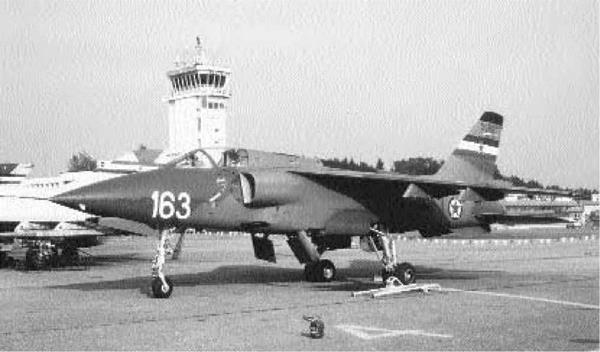
Type: Light Bomber
|
|
Dimensions: wingspan, 31 feet, 6 inches; length, 48 feet, 10 inches; height, 14 feet, 7 inches
Weights: empty, 13,007 pounds; gross, 22,267 pounds
Power plant: 2 x 5,000-pound thrust Roll-Royce Viper turbojet engines
Performance: maximum speed, 721 miles per hour; ceiling, 41,010 feet; range, 329 miles
Armament: 2 x 23mm cannons; up to 3,307 pounds of bomb and rockets
Service dates: 1979-
olitics and aviation make for strange bedfellows.
This axiom is borne out in the case of the jointly produced Orao, an indifferent fighter-bomber with great national pride attached.
In 1970 two maverick communist states, Romania and Yugoslavia, announced a decision to jointly develop a new ground-attack aircraft. This move could hardly be viewed as unexpected, as Yugoslavia under Marshal Tito had thumbed its nose at the Soviet Union since 1946. Moreover, Romania’s dictator Nicolae Ceausescu—his country a nominal member of the Warsaw Pact—was a pragmatist determined to forge links outside of the communist bloc. Given the prickly sensibilities of Balkan nationalism, however, each side went to inordinate lengths not to outstage the other. The new craft hoisted a lot of national pride on its back, so, despite common origins, it was also assigned different names! The Romanian version would be designated the IAR 93, whereas its Yugoslavian counterpart became the SOKO J 22 Orao (Eagle).
Early on the two national state aviation industries SOKO and CNIAR elected a relatively simple, if outwardly modern, design. The J 22/IAR 93 was a single-seat, shoulder-wing jet with swept wings and tail surfaces. It was powered by two Rolls-Royce Viper turbojet engines with afterburners, to be manufactured locally. The new craft was destined as a low-level ground-attack machine with possible interception functions. Plans were also entertained to produce a two-seat trainer version. Construction moved forward haltingly, and it was not until October 31, 1974, that two prototypes flew—on the same day in both countries. Production had finally geared up by 1979, and the first models arrived for service shortly thereafter. The initial machines lacked afterburners and were immediately consigned to reconnaissance duties. Subsequent models were fitted with the thrust-enhancing device, but even that addition did not translate into supersonic performance. Consequently, the Orao remains a poor man’s attack plane. Romania has acquired about 200, but Yugoslavian production halted at about 50 after that country splintered in 1995.
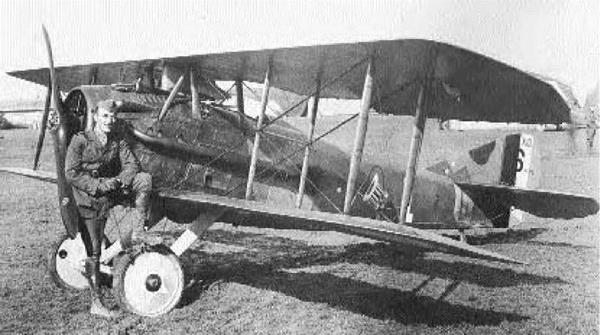
Type: Fighter
Dimensions: wingspan, 26 feet, 6 inches; length, 20 feet, 4 inches; height, 7 feet, 8 inches Weights: empty, 1,255 pounds; gross, 1,808 pounds
Power plant: 1 x 220-horsepower Hispano-Suiza liquid-cooled in-line engine Performance: maximum speed, 138 miles per hour; ceiling, 21,800 feet; range, 220 miles Armament: 2 x 7.7mm machine guns Service dates: 1916-1923
he magnificent SPAD XIII was the best French fighter of World War I and a radical departure from earlier design philosophies. Although not as nimble as the lighter Nieuports, the sacrifice in maneuverability was offset by speed and ruggedness.
In 1916 the inability of the Societe Pour les Appareils Deperdussin (SPAD) to market the SPAD A 1 two-seat fighter induced designer Louis Bechereau to rethink his approach. In April 1916 his prototype SPAD VII emerged as a completely new aircraft sporting beautifully clean lines. It was a conventional biplane with unstaggered, four-bay wings and a round cross-section fuselage housing a 160-horsepower in-line V engine. Armament was restricted to one machine gun. Test flights proved the SPAD VII possessed great speed and strength, so the craft entered service within months. The new fighter was immediately successful, being faster than German fighters in both climb and level flight. Moreover, SPAD VIIs could absorb amazing amounts of damage and return safely. By 1917 more than 5,000 had been produced, and they equipped
virtually every French fighter squadron, along with many in Italy, Belgium, and Russia. Reputedly, Italian ace Francesco Baracca grew so attached to his SPAD VII that he refused to trade it when later models became available.
In 1917 Bechereau capitalized on his success by developing the mighty SPAD XIII. This was a further refinement of his earlier masterpiece, with two machine guns, longer wings, and a stronger engine. In combat the SPAD XIII repeated the success of the earlier design, and it became the chosen mount of numerous French aces such as Rene Fonck, Georges Guynemer, and Charles Nungesser. By 1918 more than 8,472 had been constructed, equipping no less than 71 French squadrons. It also replaced rickety Nieuport 28s of the American Expeditionary Force and was flown with great success by Captain Eddie Rickenbacker. More than any other airplane, the SPAD XIII helped turn the air war’s tide in favor of the Allies. Afterward it was widely exported abroad and continued in frontline service for nearly a decade.
|

Type: Light Bomber
|
|
Dimensions: wingspan, 45 feet, 3 inches; length, 61 feet, 6 inches; height, 16 feet, 5 inches
Weights: empty, 36,155 pounds; gross, 42,989 pounds
Power plant: 1 x 24,802-pound thrust NPO Saturn AL-21F-3 turbojet engine
Performance: maximum speed, 870 miles per hour; ceiling, 49,870 feet; range, 715 miles
Armament: 2 x 30mm cannons; up to 2,205 pounds of bomb or rockets
Service dates: 1971-
ussian aircraft builders display great ingenuity in wringing every last ounce of performance from existing machines. The long-lived Su 17 is such an example, and it continues to be upgraded and employed long after the basic design became obsolete.
In 1956 the Sukhoi design bureau created its first tactical jet bomber, the Su 7, a modern-looking machine built in large numbers to offset its relative simplicity. It was a capable fighter-bomber and ruggedly built but also somewhat underpowered. Moreover, it suffered from long runway rolls and rather short range. In 1967 the Sukhoi bureau decided to upgrade this family of bombers by adding variable-geometry wings to enhance takeoff, landing, and load-carrying abilities. Early on it was judged impossible to fit wing-retracting equipment into the narrow fuselage, so engineers compromised by making the wings pivot midway along their length. The added lift increased the Su 7’s takeoff performance, and operational radius and ordnance payload were improved as well. Commencing in
1971 the new Su 17 became operational in large numbers, and they were deployed by Warsaw Pact allies and Soviet client states. It has since received the NATO designation FITTER.
During the past three decades, the basic Su 17 design has undergone numerous modifications and upgrades that render this marginally obsolete machine still useful as an attack craft. The latest variant, the Su 17M, is distinguished by a close-fitting clamshell canopy with a high spine ridge running the length of the fuselage. The tail fin is also somewhat taller and employs a single airscoop at its base. This model has been exported abroad as the Su 22, with somewhat lowered-powered avionics, but otherwise it remains an effective bombing platform. After the breakup of the Soviet Union in the late 1980s, many former Warsaw Pact countries were eager to unload their aging Sukhois, but Russia alone seems content to maintain its stable of 800-plus Su 17s. Their rugged design, combined with good reliability and performance, ensures a long service life.
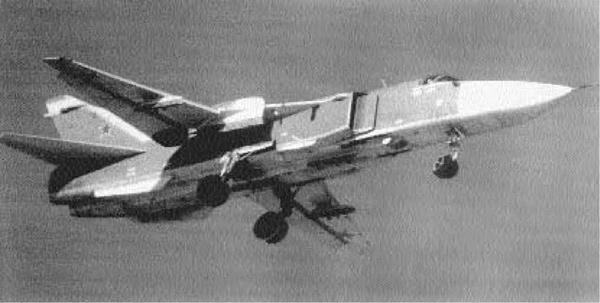
Type: Medium Bomber; Reconnaissance
Dimensions: wingspan, (spread) 57 feet, 10 inches; length, 80 feet, 5 inches; height, 16 feet Weights: empty, 41,887 pounds; gross, 87,522 pounds
Power plant: 2 x 24,802-pound thrust NPO Saturn AL-21F-3A turbofan engines Performance: maximum speed, 1,441 miles per hour; ceiling, 57,415 feet; range, 1,300 miles Armament: 1 x 23mm cannon; up to 17,637 pounds of nuclear or conventional bombs Service dates: 1974-
he formidable Su 24 is among the most potent weapons of the Russian tactical air arm. It can attack at low level, high speed, and with pinpoint accuracy under any weather conditions.
Up through the late 1960s, Soviet tactical aviation, though possessing huge quantities of airplanes, still lacked genuine nighttime all-weather attack capability. Moreover, in view of the increasing sophistication of antiaircraft defenses, low-level operations were becoming a matter of survival. The existing Il 28 and Yak 28s then in service were simply too old or too incapable to meet such rigorous standards. To remedy this shortfall and place the Red Air Force on par with Western adversaries, the Sukhoi design bureau was entrusted with designing a new generation of ground-attack craft. Commencing in 1970 it experimented with a bizarre variety of delta and vertical-takeoff prototypes before settling on a machine very reminiscent of the General Dynamics F-111. Like that groundbreaking U. S. design, the new Su 24 employed variable-geometry wings
that sweep forward to assist takeoff and landings, then sweep back for high-speed operations. Around 900 were constructed since 1974, and they received the NATO code name FENCER.
In service the Su 24s were the first Russian aircraft to incorporate a totally integrated avionics system, one linking bombsight, weapons control, and navigation into one central computer. The new Su 24, in fact, was initially viewed as a “mini-F-111” owning to the obvious side-by-side placement of the two-member crew. This was proof that a Soviet warplane, for the first time, flew with a dedicated weapons-systems officer to operate an advanced avionics suite. Approaching a target at low altitude and high speed, Su 24s can deliver a host of conventional or nuclear weapons with great accuracy at night and in bad weather. An equally adept tactical reconnaissance version, the Su 24MR, has also been developed. With continual upgrades, these formidable warplanes will remain in service for years to come.
|
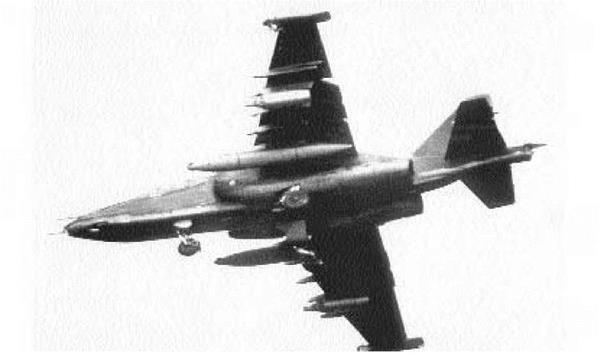
Type: Antitank; Light Bomber
|
|
Dimensions: wingspan, 47 feet, 1 inch; length, 50 feet, 11 inches; height, 15 feet, 9 inches
Weights: empty, 21,605 pounds; gross, 41,005 pounds
Power plant: 2 x 9,921-pound thrust NMPK R-195 turbojet engines
Performance: maximum speed, 590 miles per hour; ceiling, 22,965 feet; range, 308 miles
Armament: 1 x 30mm cannon; up to 9,700 pounds of bombs or rockets
Service dates: 1984-
he Su 25 is successor to the famous Il 2 Shtur – movik of World War II. Fast and heavily armed, it is reputedly the most difficult plane in the world to shoot down.
The air war in Vietnam highlighted the need for simple close-support aircraft able to operate from unpaved strips close to the front. Such warplanes would also have to deliver heavy ordnance against targets with great accuracy and be able to survive intense ground fire. The United States parlayed its experience into the Fairchild A-10 Thunderbolt II, a heavily armored twin-engine bomber. The Soviets also watched these developments closely before deciding that they, too, needed similar aircraft and capabilities. During World War II Russia had deployed the redoubtable Il 2 Shturmovik aircraft for identical reasons, so in 1968 the Sukhoi design bureau became tasked with developing an equivalent machine for the jet age. The bureau settled upon a design reminiscent of the Northrop YA-9, which had lost out to the A-10 in competition. The new Su 25 was an all-metal,
shoulder-wing monoplane constructed around a heavily armored titanium “tub” that housed both pilot and avionics. Engines were placed in long, reinforced nacelles on either side of the fuselage, and the fuel tanks were filled with reticulated foam for protection against explosions. To assist slow-speed maneuvering, the wingtip pods split open at the ends to form air brakes. Its profile is rather pointed, but a blunt noseplate covers a laser range finder/target designator. The Su 25 is somewhat faster than the A – 10, trusting more in speed to ensure survival than a dependency on agility and heavy armor. It is nonetheless an effective tank destroyer.
A series of preproduction aircraft was subsequently deployed to Afghanistan, where the planes performed useful service against guerilla forces. They flew some 60,000 sorties, losing 23 machines in the process, but the decision was made to enter production in 1980. Since then 330 Su 25s have been built; they have received the NATO designation FROGFOOT.
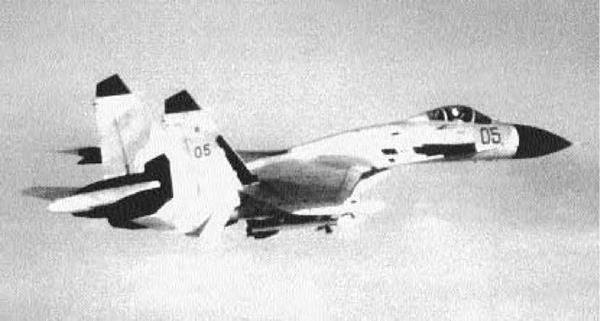
Type: Fighter
Dimensions: wingspan, 48 feet, 3 inches; length, 72 feet; height, 19 feet, 6 inches Weights: empty, 38,580 pounds; gross, 72,750 pounds
Power plant: 2 x 27,557-pound thrust Saturn/Lyulka AL-31F turbofan engines Performance: maximum speed, 1,553 miles per hour; ceiling, 59,055 feet; range, 2,285 miles Armament: 1 x 30mm cannon; up to 10 air-to-air missiles Service dates: 1985-
he fantastic Su 27 is probably the world’s most impressive interceptor. Fast, capable, and heavily armed, it was the first aircraft to perform the famous “cobra” maneuver.
By 1969 the forthcoming generation of U. S. fighters—the Grumman F-14 Tomcat and the Mc – Donnell-Douglas F-15 Eagle—caused great consternation within Soviet aviation circles. These new planes were projected to be faster, more maneuverable, and able to carry more missiles than their Russian counterparts. That year Pavel Sukhoi began development of a fighter-interceptor with the range, armament, and ultramodern avionics to counter them. It was imperative that the new craft be able to detect and intercept low-flying targets and meet agile U. S. fighters on equal terms. Several unsuccessful prototypes were developed before Sukhoi died; his successor, Mikhail Simonov, hit upon a functional solution. The new Su 27 was a big fighter by virtue of the 4-foot-wide radar dish utilized in the nose. It also employed widely separated twin turbofan engines in a beautifully blended forebody and
high-lift wing. The craft was deliberately made unstable for enhanced maneuverability and is flown with computer-assisted fly-by-wire technology. Moreover, the Su 27 does not require in-flight refueling, as it carries 10 tons of fuel aloft. The NATO code word for the big craft is FLANKER, a name adopted by Russian pilots themselves.
In 1986 pilot Viktor Pugachev impressively flew an Su 27 from Moscow to the Paris Air Show nonstop, then stunned observers by demonstrating the famous “cobra” maneuver. In this acrobatic stunt, the pilot raises the nose of the Su 27 at high speed until the aircraft virtually stands still on its tail in midair; the pilot then lowers it without loss of altitude—the effect is a cobralike appearance. In service the FLANKER is designed for long-range interception, being the first Russian fighter unshackled from ground-controlled intercept radar. It can launch up to 10 missiles before closing in for the kill with a heavy cannon. China, wishing to replace its aging fighter fleet, purchased several for its own air force. The Su 27 is a formidable fighting machine and will remain so for years.
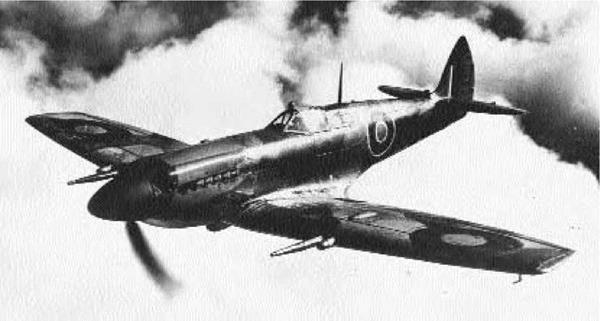
Type: Fighter
Dimensions: wingspan, 36 feet, 10 inches; length, 32 feet, 8 inches; height, 12 feet, 8 inches Weights: empty, 6,600 pounds; gross, 8,500 pounds
Power plant: 1 x 2,050-horsepower Rolls-Royce Griffon liquid-cooled in-line engine Performance: maximum speed, 448 miles per hour; ceiling, 44,500 feet; range, 460 miles Armament: 2 x 20mm cannons; 4 x.303-inch machine guns; up to 500 pounds of bombs Service dates: 1938-1954
he immortal Spitfire remains the symbol of British aerial prowess during World War II. Beautiful, fast, and lethal, this thoroughbred warrior was the quintessential fighter pilot’s dream—and more.
Reginald J. Mitchell was an accomplished designer of racing craft when, in 1934, he set about designing Britain’s first all-metal eight-gun fighter. His initial attempt, to be named the Spitfire, was a crank-winged apparition that flew as bad as it looked. However, development continued as a company project. The revised machine was a rakish, highly streamlined aircraft with a pointed spinner, retractable undercarriage, and beautiful elliptical wings. It exuded the persona of a racehorse. The new Spitfire flew just less than 350 miles per hour, making it the fastest fighter in the world. Moreover, its handling and maneuverability were intrinsically superb, traits that carried over through a long and exemplary service life. The usually dubious British Air Ministry was so singularly impressed by the craft that a new specification was issued “around it” to facilitate production. Spitfire Is entered squadron ser
vice in 1938, and the following year, when Europe was plunged into war, they constituted 40 percent of Britain’s frontline fighter strength.
Commencing with the 1940 Battle of Britain, Spitfires captured the imagination of the world. They fought the equally capable Messerschmitt Bf 109Es to a draw, leaving the more numerous Hawker Hurricanes to drub bomber formations. As the war developed, so did the Spitfire, into no less than 40 major versions. Prior to 1941 they were indelibly associated with the equally famous Rolls – Royce Merlin engine, but the appearance of the Focke-Wulf Fw 190 in 1942 caused better engines to be sought. Eventually the powerful Griffon in-line engine was married to the Spitfire fuselage, endowing it with greater speed and climb without infringing upon its legendary handling. The new Spitfire XIV was so fast that it successfully engaged the dreaded Me 262 jet fighters, downing several. The last marks were assembled in 1947 and remained in service until 1954. More than 20,000 of these peerless warriors were built.
|
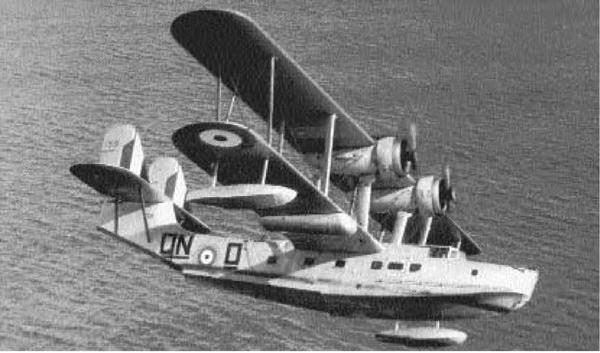
Type: Patrol-Bomber
|
|
Dimensions: wingspan, 85 feet; length, 54 feet, 10 inches; height, 21 feet, 9 inches
Weights: empty, 11,250 pounds; gross, 19,000 pounds
Power plant: 2 x 875-horsepower Bristol Pegasus X radial engines
Performance: maximum speed, 165 miles per hour; ceiling, 18,500 feet; range, 1,000 miles
Armament: 3 x.303-inch machine guns; up to 1,000 pounds of bombs
Service dates: 1938-1942
he Stranraer was the last in a dynasty of flying boats that spanned the interwar period. It was also the fastest flying boat ever employed by the Royal Air Force.
In 1924 the British Air Ministry released specifications for a new biplane flying boat to replace the World War I-vintage Felixstowe F5. The following year, Reginald J. Mitchell, future designer of the legendary Spitfire, conceived a new machine based upon his successful Supermarine Swan, a civilian machine. Christened the Southampton, 78 machines were manufactured for the Royal Air Force. The Mk II variant sported an all-metal hull, and in 1927-1928 Southamptons of No. 205 Squadron successfully completed a 27,000-mile tour of the Far East. They served capably for nearly a decade before being supplanted by a more refined model, the Scapa, in 1933. This machine bore many similarities to its forebear but differed in having double rudders, a fully enclosed cockpit, and relocated engines at the bottom of the top wing. By 1935 15 ex
amples had been delivered; they were withdrawn by 1938.
In 1931 the government drew up specifications for a new all-purpose flying boat. Mitchell created a scaled-up version of the Scapa that was initially designated the Southampton V. It was longer than the Scapa, with an extra set of interplane struts and a tailgunner position. The prototype was powered by two Bristol Pegasus IIIM engines driving two-blade wooden propellers, but production models utilized three-blade metal ones. Consequently, the new craft, which was renamed the Stranraer, became the fastest flying boat ever acquired by the RAF. A total of 24 were delivered in 1935, but Stranraers were rapidly overtaken by technology and soon rendered obsolete. They actively patrolled in 1939, but the following year gave way to greatly superior Short Sun – derlands. However, Stranraers received a second lease on life in 1941 when the Royal Canadian Air Force acquired an additional 47 examples. They performed coastal patrolling until being retired in 1944.
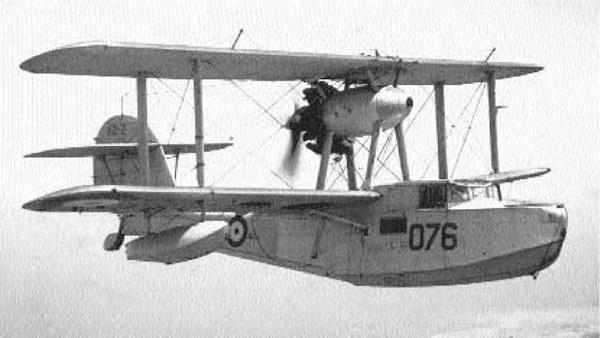
Type: Air/Sea Rescue; Reconnaissance
Dimensions: wingspan, 45 feet, 10 inches; length, 37 feet, 3 inches; height, 15 feet, 3 inches
Weights: empty, 4,900 pounds; gross, 7,200 pounds
Power plant: 1 x 775-horsepower Bristol Pegasus radial engine
Performance: maximum speed, 135 miles per hour; ceiling, 18,500 feet; range, 600 miles Armament: 2 x.303-inch machine guns; up to 760 pounds of bombs Service dates: 1936-1945
he homely “Shagbat” was one of the most welcome sights in the skies of World War II. It rescued thousands of downed airmen and performed useful service as a naval gunnery spotter.
As early as 1921 Reginald J. Mitchell had designed a small flying boat that he deemed the Seagull. It continued on as a private venture for many years until 1933, when the Australian government purchased 24 examples of the latest version, the Seagull
V. This craft was ugly but functional. It was a singlebay biplane with a fuselage mounted below the lower wing; a pusher-configuration engine stood affixed on struts above it. The hull was made of metal and stressed for shipboard catapulting and, hence, very strong. Flying surfaces were all fabric-covered, and there was a fully enclosed cockpit and two gunner positions. At this time the Fleet Air Arm closely scrutinized Mitchell’s creation and in March 1936 adopted it as the Walrus I. They were deployed on capital ships throughout the fleet and engaged in reconnais
sance and gunnery spotting. Once fitted with fixed landing gear, the little amphibians could also operate from airstrips. As events proved, the Walrus was adept at convoy patrolling and antisubmarine warfare. A total of 287 Walrus Is were produced.
During World War II the ubiquitous Walrus served in virtually every theater of the war. Antiquated appearances notwithstanding, it was a tough little craft capable of absorbing great amounts of punishment. In addition to naval service, Shagbats also equipped numerous squadrons of the Royal Air Force Air/Sea Rescue Service. This force was responsible for saving thousands of downed airmen, and its stately gait and noisy drone were reassuring sights in the combat theaters. By 1940 a new version, the Walrus II, was introduced, with a completely wooden hull. Production of Mk IIs amounted to 453 machines, with many serving in the Australian, New Zealand, and other Commonwealth navies. Most were phased out shortly after 1945.
|
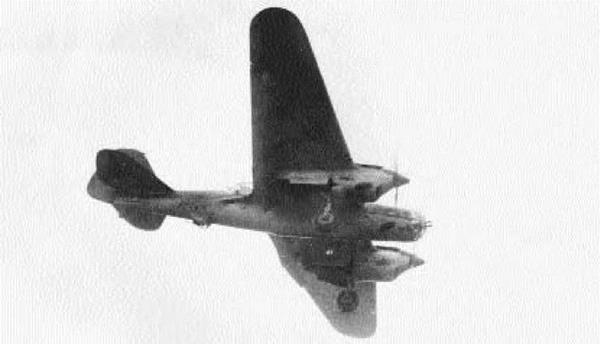
Type: Light Bomber
|
|
Dimensions: wingspan, 66 feet, 8 inches; length, 40 feet, 3 inches; height, 10 feet, 8 inches
Weights: empty, 10,511 pounds; gross, 17,372 pounds
Power plant: 2 x 960-horsepower M-103 liquid-cooled in-line engines
Performance: maximum speed, 280 miles per hour; ceiling, 25,590 feet; range, 1,429 miles
Armament: 6 x 7.62mm machine guns; 1,323 pounds of bombs
Service dates: 1936-1943
ast-flying SB 2s were among the world’s best bombers when they appeared in 1936. They enjoyed a distinguished career in Spain, Mongolia, and Finland before suffering heavy losses in World War II.
In 1933 the Soviet government announced specifications for an entirely new light bomber, one so fast that it could operate without escort fighters. The Tupolev design bureau finessed the problem with great skill, and in 1934 it built two prototypes with radial and in-line engines respectively. The new SB 1 was Russia’s first stressed-skin aircraft, a midwing, all-metal monoplane bomber. It was modern in every respect to Western contemporaries and possessed such advanced features as retractable landing gear and flush-riveting. A crew of four was comfortably housed, and the plane flew faster than any fighter or bomber then in service, including the highly touted Bristol Blenheim. In 1936 the in-line – engine prototype entered production as the SB 2, and nearly 7,000 were produced. These modern, capable craft formed the bulk of Soviet tactical aviation over the next five years and played a major role
in modernizing and revitalizing the Soviet bomber forces.
SB 2s were bloodied in the Spanish Civil War (1936-1939), where they proved impervious to slower Nationalist fighters. They also enjoyed similar success in Mongolia against the Japanese and were exported to China in quantity. Several new versions were also introduced with more powerful engines, but this robust design was growing obsolete in light of developments elsewhere. SB 2s again fought well against Finland during 1939-1940, but when Germany invaded Russia the following year they lost their speed advantage. Being somewhat flammable, scores were quickly dispatched by formidable Messerschmitt Bf 109 and Bf 110 fighters. But they were abundantly available, and so the Soviets had little recourse but to continually employ them. They did so in a wide variety of roles, including that of night intruder and torpedo-bomber. By the time SB 2s withdrew in 1943, they had sustained the heaviest losses of any Russian aircraft in World War II.
|

Type: Heavy Bomber
|
|
Dimensions: wingspan, 132 feet, 10 inches; length, 82 feet, 8 inches; height, 18 feet
Weights: empty, 22,000 pounds; gross, 54,020 pounds
Power plant: 4 x 730-horsepower M-34R liquid-cooled in-line engines
Performance: maximum speed, 179 miles per hour; ceiling, 25,365 feet; range, 1,550 miles
Armament: 4 x 7.62mm machine guns; up to 12,790 pounds of bombs
Service dates: 1931-1944
he mighty TB 3 was the world’s most advanced heavy bomber throughout most of the early 1930s. Despite archaic looks, it was a solid, capable design and served admirably through most of World War II.
Russian proclivities for giant aircraft dated back to the Sikorsky Ilya Muromets of 1914, and in time they accumulated sufficient knowledge and expertise to build even bigger machines. In 1925 Andrei N. Tupolev fielded the TB 1, an advanced metal monoplane that was the best in its class. Three years later he received orders to build a four-engine bomber with prodigious range and lifting abilities. He complied, and the new TB 3 emerged as an allmetal, low-wing monoplane with fixed landing gear and a crew of ten. Initial models were covered in corrugated metal, stressed to great strength. Consequently, in 1931 the TB 3 could lift more than 12,000 pounds on short flights—a payload unmatched until the Avro Lancaster and Boeing B-29 Superfortress a decade later. Stalin appreciated the propaganda
value of such huge machines, and during the 1934 May Day parade no less than 250 TB 3s overflew Moscow. The production run concluded by 1938 with 808 machines built, with latter versions possessing smooth, stressed skin.
In service the TB 3s proved ruggedly adaptable and easily maintained. They made international headlines by transporting scientific teams during a number of expeditions to the Arctic Circle. TB 3s were also used during the mid-1930s to train embryonic Soviet parachute forces, who deployed by jumping off the aircraft’s broad wing. An even more controversial use was the so-called parasite experiments, whereby the lumbering craft carried their own fighter escorts. One TB 3 could successfully carry, launch, and retrieve no less than three I 15 biplanes and two I 16 monoplanes. The giant craft was marginally obsolete at the start of the 1941 German invasion and, being vulnerable to enemy fighters, served as a night bomber and transport. All these versatile machines were retired from service by 1944.
|

Type: Medium Bomber
|
|
Dimensions: wingspan, 61 feet, 10 inches; length, 45 feet, 3 inches; height, 13 feet, 9 inches Weights: empty, 18,524 pounds; gross, 28,219 pounds Power plant: 2 x 1,850-horsepower Shvetsov radial engines
Performance: maximum speed, 342 mile per hour; ceiling, 31,170 feet; range, 1,553 miles Armament: 1 x 12.7mm machine gun; 2 x 20mm cannons; up to 5,004 pounds of bombs Service dates: 1944-1961
he Tu 2 was a Soviet medium bomber that compiled an impressive record in World War II. Its success is especially remarkable considering that it was designed in a prison.
In 1937 the Russian aircraft engineer Andrei Tupolev was accused of passing secrets to the Germans and was incarcerated in a Soviet gulag. He and his entire staff languished for two years until they obtained promises of early release in exchange for designing a new bomber for the Red Air Force. Work commenced from behind prison walls, and in January 1941 the prototype first flew. It was designated “Aircraft 102,” for Tupolev’s status as a nonperson precluded using his initials! The new machine was a strikingly clean, twin-engine design with smooth engine cowlings, a pointed profile, and twin rudders. During flight tests it demonstrated even better performance than the Petlyakov Pe 2s then in service. It was slow going at first, but the German invasion of the Soviet Union in June 1941 dramatically accelerated the pace of production.
The Tu 2 proved itself a fine machine, especially in terms of speed, payload, and handling. The big, rugged craft was especially popular with crews for its amazing ability to absorb damage and remain aloft. Initial deliveries did not commence until late 1944, and then in only limited numbers. This was because the Tu 2 was more complicated to build than the Pe 2 and took longer to assemble. Another reason is that the Pe 2 was already serving capably— and in large numbers—so Tupolev’s new machine did not receive priority production. Nonetheless, by 1945 Tu 2s were a common sight in the skies over Eastern Europe, and they had a devastating effect upon German troops and armor. Consequently, Tupolev was rehabilitated and received the Stalin Prize for his achievement. Tu 2s remained in production until 1948, following a production run of 2,557 machines. Forces under the United Nations encountered them during the Korean War in 1950, and Tu 2s also flew with communist satellite air forces until 1961.
|
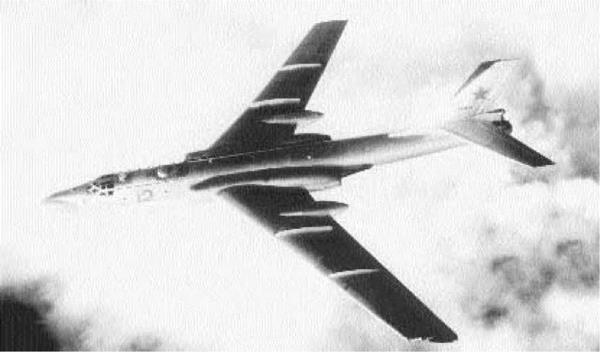
Type: Medium Bomber; Reconnaissance
|
|
Dimensions: wingspan, 108 feet, 3 inches; length, 14 feet, 2 inches; height, 34 feet
Weights: empty, 82,012 pounds; gross, 167,110 pounds
Power plant: 2 x 20,920-pound thrust Mikulin RD-3m-500 turbojets
Performance: maximum speed, 616 miles per hour; ceiling, 40,350 feet; range, 4,000 miles
Armament: 6 x 23mm cannons; up to 6,600 pounds of nuclear bombs or standoff missiles
Service dates: 1955-
ne of the classic aviation designs of the 1950s, the Tu 16 was Russia’s most successful jet bomber. It remains in active service today as a missile platform and maritime reconnaissance craft.
The origins of the famous Tu 16 trace back to 1944, when bad weather forced down three U. S. Boeing B-29s on a Russian airfield in Siberia. The Soviet Union, neutral toward Japan, promptly detained the crews and confiscated the aircraft. This technological windfall handed Soviet dictator Josef Stalin the world’s most advanced bomber aircraft, and he immediately ordered reverse-engineered copies for the Red Air Force. They became known as the Tupolev Tu 4 and received the NATO designation BULL. By 1950 the Americans and British were developing and deploying advanced jet-powered bomber designs, so Stalin authorized production of Soviet models as well. The new Tu 16 thus became the first successful Soviet jet bomber, the first with swept-back wings, and the first with engines buried
in the wing roots. It was revealed to the West in 1954 as a midwing aircraft of extremely sleek lines. The landing gear were uniquely positioned in trailing- edge pods, as the wing was too thin to contain them. Tupolev’s conservative approach gave the Tu 16 a robust construction that in turn led to a long and varied service life. Around 2,000 were manufactured and given the NATO code name BADGER.
Initial models of the Tu 16 were tactical nuclear bombers, but, lacking the necessary range to hit the United States, they were quickly phased out by more modern designs. Most were shunted over to the Soviet navy, which employed them in long-range reconnaissance and antishipping strike roles. Many BADGERS encountered at sea were usually configured with one or more cruise missiles in the bomb bay or under the wings. The type was also exported to China in the late 1950s and was produced there in some quantity. An estimated 70 Tu 16s fly with Russian naval aviation and will continue serving for years to come.
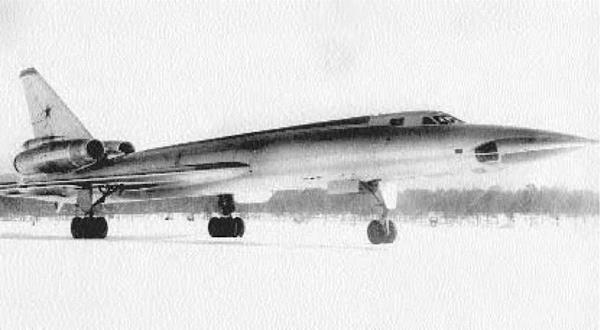
Type: Medium Bomber; Reconnaissance
Dimensions: wingspan, 77 feet; length, 139 feet, 9 inches; height, 35 feet
Weights: empty, 83,995 pounds; gross, 207,230 pounds
Power plant: 2 x 27,560-pound thrust Dobrynin RD-7M-2 turbojet engines
Performance: maximum speed, 920 miles per hour; ceiling, 43,365 feet; range, 2,600 miles
Armament: 2 x 23mm cannons; up to 22,046 pounds of nuclear weapons or missiles
Service dates: 1961-
he Tu 22 was the Soviet Union’s first supersonic bomber. Hobbled by poor range, it spent most of a long life as a maritime reconnaissance platform or performing antishipping functions.
Throughout the late 1950s, Western air defenses acquired new levels of sophistication and effectiveness. The Soviet Union, saddled with lumbering subsonic bombers, had little hope of mounting effective attacks in the event of war. It therefore became imperative to develop new jet bombers with a minimum supersonic dash capacity for successful penetration of enemy air space. Around 1956 the Tupolev design bureau began creating Russia’s first supersonic bomber, one that could compete with the General Dynamics B-58 Hustler and Dassault Mirage IV. The Tu 22 emerged four years later as a machine configured for high speed and high altitude without sacrificing subsonic handling. Its most unusual aspect was the twin engines mounted high on the rear fuselage. This obviated the need for long inlet ducts and the
drag penalties they imposed. The wings were also carefully rendered with a compound sweep that facilitated high speeds yet performed well in a subsonic regime. Moreover, the Tu 22 was the first Soviet bomber to dispense with traditional glazed noses and numerous gun turrets: The new craft employed internal bombing/navigation radar and a remote-controlled tail turret. In service the Tu 22 flew well and could reach supersonic speeds for brief periods, but it possessed abysmally short range. Around 250 were constructed, known to NATO as BLINDER A.
The Tu 22 did not survive long as a nuclear bomber, for in the early 1960s most were siphoned off into Soviet naval aviation. They were fitted with various antishipping strike missiles and redesignated BLINDER B. A maritime reconnaissance version, BLINDER C, with numerous electronic protuberances, was also developed. Only a few Tu 22s remain operational at present in Russia. Several others are currently employed by the Libyan air force.

Type: Medium Bomber; Reconnaissance
Dimensions: wingspan, (spread) 112 feet, 6 inches; length, 139 feet, 4 inches; height, 36 feet Weights: empty, 119,059 pounds; gross, 278,660 pounds
Power plant: 2 x 55,115-pound thrust Kuznetsov KKBM MN25 turbofan engines Performance: maximum speed, 1,320 miles per hour; ceiling, 59,055 feet; range, 7,457 miles Armament: 2 x 23mm cannons; up to 52,910 pounds of bombs or missiles Service dates: 1975-
nce the object of intense diplomatic debate, the celebrated Tu 22M was merely the latest failed attempt by the Soviet Union to acquire strategic bombing capability. It is nonetheless a formidable aircraft with extensive service in the Russian naval air arm.
In the early 1960s the Tu 22’s shortcomings prompted the Tupolev design bureau to consider major revisions. Wind-tunnel studies indicated that a variable-geometry arrangement (known as the “swing wing”) could nearly double its combat radius while halving takeoff distance. Because the Soviet Union still lacked a bona fide supersonic bomber capable of reaching the United States, Tupolev was authorized to develop an improved Tu 22. The first model emerged in 1969 as a highly modified BLINDER, replete with an area-ruled fuselage and podded landing gear on the wing’s trailing edges. The wing itself was conservatively designed and pivoted only midway down the span. The new machine entered service soon thereafter, receiving the NATO designation BACKFIRE A. Because of the plane’s
high drag and other deficiencies, only small numbers were built.
In 1969 Tupolev fielded a new and radically altered prototype, soon internationally known as the BACKFIRE B. This craft employed the nose section of the old Tu 22, but the thin fuselage was joined to two lengthy engine nacelles with massive air intakes at the front. The landing gear were also repositioned from wingpods to the fuselage. In service the new craft displayed marked improvement over earlier models and entered production as the Tu 22M. This may have been a deliberate ruse on the part of the Soviets, who wished to regard it as simply a Tu 22 variant during the SALT arms-reduction negotiations. The United States, fearful that the new plane possessed sufficient range as a strategic bomber, insisted that it be included in negotiations. As it turns out, even with in-flight refueling the Tu 22M could barely reach Cuba. However, the BACKFIRE remains a formidable antishipping weapon and continues serving in that capacity with Russian naval aviation. Production peaked at around 250 machines.
|

Type: Strategic Bomber; Antisubmarine; Reconnaissance
|
|
Dimensions: wingspan, 167 feet, 7 inches; length, 155 feet, 10 inches; height, 39 feet, 9 inches Weights: empty, 189,544 pounds; gross, 407,848 pounds Power plant: 4 x 14,795-horsepower Kuznetsov NK-12M turboprop engines Performance: maximum speed, 757 miles per hour; ceiling, 39,370 feet; range, 5,150 miles Armament: 2 x 23mm cannons; up to 25,000 pounds of bombs; torpedoes, or missiles Service dates: 1955-
he legendary BEAR is the world’s fastest propeller-driven aircraft. It is also the world’s largest combat aircraft, with a distinguished service record dating back nearly half a century.
In the early 1950s the Soviet quest to crash-build a viable intercontinental strategic bomber took two distinct paths. The more conventional, jet-powered approach culminated in the unsatisfactory Mya – sishchev M 4, a promising design that simply lacked sufficient range to be strategic. Recognizing the pitfalls of early jet-engine technology, the Tupolev design bureau opted to utilize newly developed turboprop engines as a practical compromise. The four massive Kuznetsov power plants chosen would drive eight contrarotating propellers that were huge—18 feet in diameter! The fuselage was also conservatively conceived, as were the enormous swept wings. When the Tu 95 premiered at Moscow in 1955, the aviation world gasped, as Russia had apparently constructed an aircraft that should not have worked at all. In fact, the Tu 95 functioned well as a strategic bomber, being
almost supersonic and, thanks to the economy of the engines, possessing great range. With in-flight refueling, the Soviets now fielded an aircraft that could hit the United States and return. This point was well taken by the Americans, who spent billions of dollars developing new missiles and interceptors to thwart it. Around 300 Tu 95s of various types were constructed; all were assigned the NATO code name BEAR.
The first Tu 95s were intended as nuclear bombers, but the increasing sophistication of surface-to-air missile technology rendered them obsolete by 1960. Thereafter, great numbers were outfitted with nuclear-tipped standoff missiles. They functioned as the pride of Soviet Naval Long Range Aviation, as does a new version, the Tu 142. This is a revamped BEAR with a longer fuselage, longer inboard nacelles, and totally redesigned wings. The Tu 142 functions today as a dedicated antisubmarine warfare weapon of tremendous range and punch. At least 100 BEARs are still thought to remain in service with Russia and India.
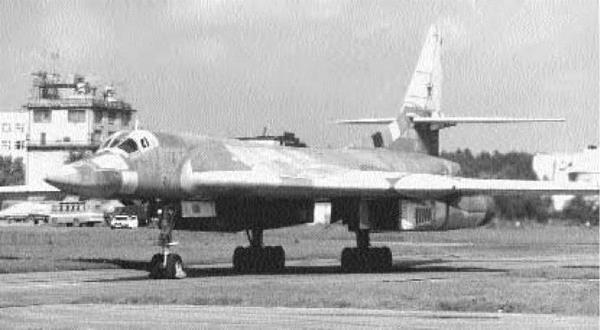
Type: Strategic Bomber
Dimensions: wingspan, (spread) 182 feet, 9 inches; length, 177 feet, 6 inches; height, 43 feet
Weights: empty, 260,140 pounds; gross, 589,947 pounds
Power plant: 4 x 30,843-pound thrust Kuznetsov NK-321 turbofan engines
Performance: maximum speed, 1,243 miles per hour; ceiling, 49,200 feet; range, 7,640 miles
Armament: up to 36,000 pounds of nuclear bombs and missiles
Service dates: 1987-
he mighty Tu 160 (designated BLACKJACK by NATO) is the most powerful and heaviest warplane ever constructed. It is designed to penetrate enemy airspace in high – or low-altitude configurations with greater speed and heavier payload than the rival North American/Rockwell B-1B Lancer.
Up through the early 1970s, the United States developed an advanced strategic bomber capable of hitting targets in the Soviet Union with speed, altitude, and excellent prospects for survival. The Soviet government summarily ordered its aviation industry to design a similar machine, even after U. S. President Jimmy Carter canceled the B-1 program in 1977. Three years later President Ronald Reagan resurrected it as the B-1B, which to save money became slated for low-altitude operations. No such cost-cutting measures were enacted in the Soviet program, however, and when the new Tu 160 materialized in 1981, it was capable of operating at any altitude. The design team under Vladimir I. Bliznuk fulfilled its tasks well, for the Tu 160 was 30 percent bigger than the B-1B, faster, and more capable. The
Soviet craft employed a similar planform to its American counterpart, possessing a blended fuselage and variable-geometry wings. The four podded engines are similarly housed under the fixed portion of the wings. The underside also sports two cavernous rotary bomb bays carrying a variety of freefall and guided nuclear weapons. Finally, the Tu 160 is almost completely operated by 100 computerized systems, and the two pilots are equipped with fighterlike joysticks plugged into multiple flyby-wire systems. The Soviet government authorized 100 to be built, and NATO granted it the designation BLACKJACK.
After 1991 the intended role of this massive bomber is largely irrelevant. With the collapse of the Soviet Union, former Russian President Boris Yeltsin ordered a halt to production of most strategic weapons, and the run of Tu 160s appears to have ended at 38 machines. Half of them were marooned in the newly independent Ukraine, pending return to Russia. The final disposition of these formidable aircraft remains unknown.
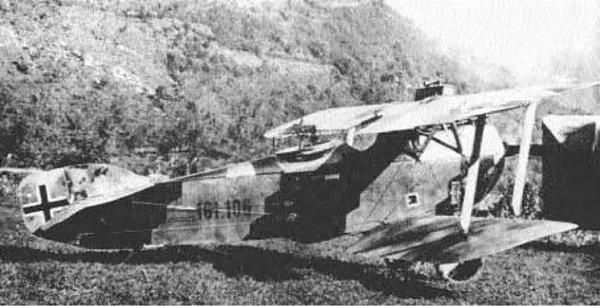
Type: Reconnaissance
Dimensions: wingspan, 31 feet, 2 inches; length, 24 feet, 4 inches; height, 8 feet 8 inches
Weights: empty, 1,654 pounds; gross, 2,536 pounds
Power plant: 1 x 230-horsepower Hiero liquid-cooled engine
Performance: maximum speed, 118 miles per hour; ceiling, 16,076 feet; range, 360 miles Armament: 2 x 7.92mm machine guns Service dates: 1918-1919
he little-known Ufag C I was among the best Austrian two-seaters of World War I and was often more popular with pilots than the celebrated Phonix C I. It became the preferred machine for low-level artillery-spotting and reconnaissance work.
In January 1917 the Ungarische Flugzeugfabrik firm entered competition against the Phonix firm to build a new reconnaissance aircraft for the Luft – fahrtruppe (Austrian air service). Like its rival, it was based upon the Hansa-Brandenburg C I, one of the infamous “Star-strutter” designs. The new Ufag machine dispensed with complicated bracing in favor of a conventional, single-bay approach. In addition, the nominally swept wing was highly modified into a straightened form with rounded tips that curved slightly inward. A crew of two sat in separate cockpits that were placed in a rather deep fuselage. The gunner also stood in a built-up ring that afforded him an excellent field of fire. Test results were impressive, and during flight trials against the Phonix machine the Ufag design proved faster and 318 _ more maneuverable at lower altitudes. The Austrian
government saw virtues in both aircraft, and the respective companies were allowed to begin production. The Ufag machine entered Austrian service as the C I in the spring of 1918.
Ufag C Is were deployed almost exclusively along the Italian front and gained a reputation as rugged, durable weapons. Given its superior low – level performance, it was the choice of many pilots for dangerous artillery-spotting service, whereas the Phonix C I was favored for high-level reconnaissance work. The relatively fast Ufag was also praised for its ability to evade and outrun most Italian fighters. Subsequent models introduced increased wingspan and a modified empennage with a smaller tailplane and a plain, unbalanced rudder to enhance maneuverability. As reconnaissance platforms they equaled anything fielded on the Western Front. By war’s end, a total of 244 C Is had been delivered by Ufag with an additional 40 machines contributed by Phonix. In 1919 several machines participated in the Hungarian Revolution and were also procured in small quantities by the fledgling Romanian air force.
|
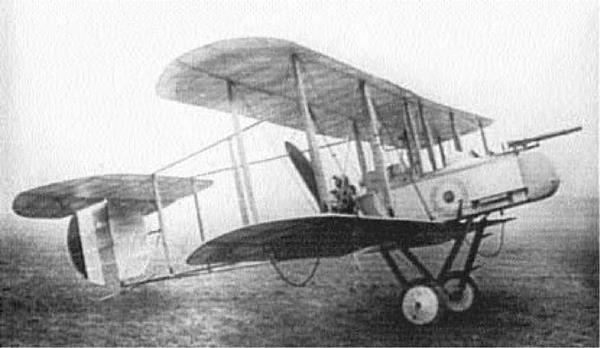
Type: Fighter
|
|
Dimensions: wing span, 36 feet, 6 inches; length, 27 feet, 2 inches; height, 11 feet, 6 inches
Weights: empty, 1,220 pounds; gross, 2,050 pounds
Power plant: 1 x 100-horsepower Gnome Monosoupape rotary engine
Performance: maximum speed, 70 miles per hour; ceiling, 9,000 feet; range, 240 miles
Armament: 1 x.303-inch machine guns
Service dates: 1915-1916
he slow, sturdy “Gunbus” was among the world’s earliest warplanes and the first British fighter. It performed useful, if undistinguished, service in World War I before being withdrawn.
The giant Vickers firm had established an airplane division as early as 1911 and was the first English company to market that new technology for military purposes. At the Olympia Air Show in 1913 Vickers unveiled its Type 18 “Destroyer,” a controversial pusher design sporting a belt-fed Maxim machine gun operated by the observer. With successive refinements a final form, the FB 5 (Fighting Biplane), emerged in 1914. This, too, was a biplane pusher with two-bay, equal-length, unstaggered wings. A large nacelle was fastened to the lower wing, housing a crew of two and the motor. The tail – booms, four in number, were made of steel and converged on a structure that formed the rudder. Despite its fragile appearance, the FB 5 was sturdy and possessed viceless flying characteristics. The Vick
ers firm, convinced that war with Germany was imminent, began construction before it was ordered by the government. When war did erupt in August 1914, several machines were available for military use, and it became the first British fighter accepted into service.
The first FB 5s did not reach France until the spring of 1915, and by summer they were flying in squadron strength. In combat it flew slow and stately, but it performed well against the equally primitive German craft of the day. On one occasion, a “Gunbus” piloted by Lieutenant G. S.M. Insall downed an Aviatik but was forced to land from damage. He subsequently repaired his plane under fire and flew it home the following day, winning the Victoria Cross. That fall the notorious Fokker Eindekker appeared, firing a synchronized gun through the propeller, which ended the FB 5’s military career. By 1916 surviving machines functioned only as trainers, a somewhat anticlimactic finale for Britain’s first fighter craft.

Type: Strategic Bomber; Tanker
Dimensions: wingspan, 114 feet, 4 inches; length, 108 feet, 3 inches; height, 32 feet, 4 inches
Weights: empty, 75,881 pounds; gross, 175,000 pounds
Power plant: 4 x 10,050-pound thrust Rolls-Royce Avon turbojet engines
Performance: maximum speed, 567 miles per hour; ceiling, 54,000 feet; range, 4,500 miles
Armament: up to 21,000 pounds of nuclear or conventional bombs
Service dates: 1955-1964
he Valiant was the first of the famous V – bombers and became the first British aircraft to test-drop nuclear weapons. Ironically, metal fatigue terminated their short and rather useful service.
The aftermath of the U. S. bombings of Hiroshima and Nagasaki underscored the necessity of nuclear deterrence to maintain peace and security in the postwar period. This was especially true in a world dominated by East-versus-West confrontation. Such prerogatives were in mind when the British Air Ministry issued Specification B.35/46 in 1946 for a fleet of jet-propelled nuclear bombers. Both Avro and Handley Page submitted designs that were extremely advanced and complicated, culminating in the splendid Vulcan and Victor bombers. However, rather than go charging off into uncharted waters, Vickers forwarded a plan that was deliberately less complicated and promised lower performance. The Air Ministry, wishing it as insurance in case the more advanced machines failed to materialized, then drew up Specification B.9/48 around the craft. The prototype Valiant first flew in 1951 as an
ultramodern, all-metal jet bomber. It was a high – wing configuration, with four jets buried in the wing roots, and a high tail. The Valiant flew well enough to warrant production, so in 1955 the first 30 examples of the B 1 model became operational. These were followed by 11 B(PR) 1 reconnaissance versions, 14 B(PR) K 1 reconnaissance/tankers, and 48 BK 1 bomber/tankers. Total production amounted to 104 machines.
Operationally, Valiants highlighted all the diplomatic and military perils of the age. In 1956 several flew from Malta and dropped bombs on Egypt during the Suez Crisis. On October 11 of that same year a Valiant test-dropped the first British atomic weapon over northern Australia. The feat was duplicated on May 15, 1957, when a Valiant dropped Britain’s first thermonuclear device in the Pacific. But as the more capable and modern Vulcans and Victors became operational, Valiants gradually were transferred to refueling duties. They were thus employed until 1964, when widespread metal fatigue caused the active fleet to be scrapped.
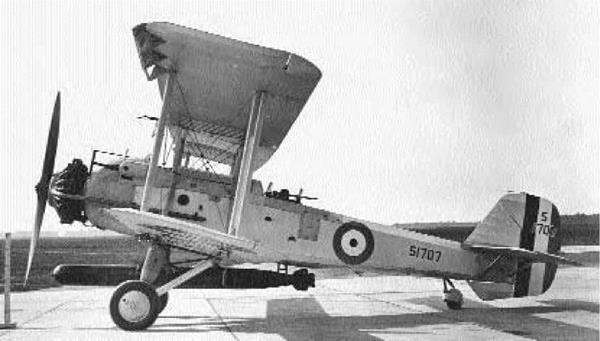
Type: Torpedo-Bomber; Liaison
Dimensions: wingspan, 49 feet; length, 37 feet, 8 inches; height, 14 feet, 8 inches
Weights: empty, 4,724 pounds; gross, 8,500 pounds
Power plant: 1 x 825-horsepower Bristol Perseus radial engine
Performance: maximum speed, 156 miles per hour; ceiling, 17,000 feet; range, 630 miles Armament: 2 x.303-inch machine guns; 1 x 18-inch torpedo, or 1,000 pounds of bombs Service dates: 1933-1942
he hulking Vildebeest was a capable machine that flew for nearly a decade. Totally obsolete by World War II, it suffered heavy losses during the defense of Singapore.
In 1925 a British Air Ministry specification sought to replace the Hawker Horsley torpedo – bomber with a more modern design. Three years later Vickers fielded the prototype Vildebeest as a possible contender. It was a large, two-bay biplane with fixed landing gear and an uncowled radial engine. The two square-tipped wings were unstaggered and of equal span, being made of metal framework and fabric covering. The fuselage was circular in cross-section and seated a crew of two in widely spaced seats. The landing gear were also widely spaced to hold an 18- inch-wide torpedo slung between them. It took a succession of different engines before the Vildebeest was successfully flown, but in 1933 it became the RAF Coastal Command’s standard torpedo-bomber.
The Vildebeest served capably for many years, and in 1935 a new model, the Mk IV, introduced a third
cockpit. Total production orders amounted to 194 machines, with 15 of them being diverted to the Royal New Zealand Air Force. When developmental problems delayed the appearance of the new Bristol Beaufort, the Vildebeest’s anticipated successor, they remained in service long after their operational usefulness had ended. This fact was painfully underscored in December 1941 when the Japanese attacked Malaysia. Vildebeests of No. 36 and No. 100 Squadrons fought with great courage—and little results—while taking heavy losses. The aging craft simply could not withstand the onslaught of modern fighter craft. Only two surviving bombers managed to reach Sumatra before being destroyed.
In 1934 the RAF sought an army cooperation version of the Vildebeest to replace the aging Fairey IIIs and Westland Wapitis. This craft, known as the Vincent, differed only in having an additional fuel tank and specialized communications equipment. A total of 197 were built, and they served throughout the Middle East until 1941.
|
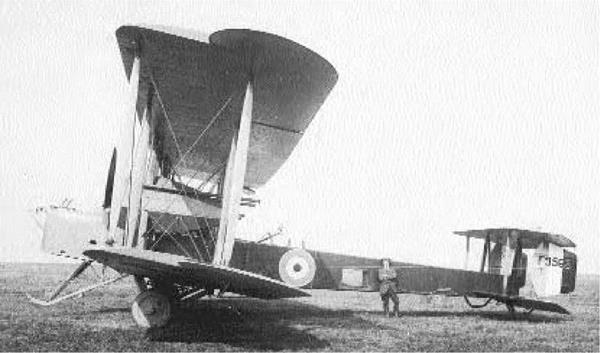
Type: Heavy Bomber
|
|
Dimensions: wingspan, 68 feet; length, 43 feet, 6 inches; height, 15 feet Power plant: 2 x 207-horsepower Hispano-Suiza water-cooled in-line engines Performance: maximum speed, 103 miles per hour; ceiling, 12,000 feet; range, 900 miles Armament: 2 x.303-inch machine guns; 2,476 pounds of bombs Service dates: 1919-1930
he Vickers Vimy was a standard Royal Air Force heavy bomber between 1919 and 1930. However, it is best remembered for two highly successful long-range flights to Ireland and Australia.
The Vimy originated from a 1917 design specification for heavy bombers capable of hitting Berlin from the British Isles, much like the Handley Page O/400 and de Havilland DH 10. The prototype first flew in November 1917 as a standard three-bay biplane of wood-and-canvas construction. The engines hung midway between equal-span wings on struts; the fuselage sported a large biplane tail unit, and the whole thing touched down on paired, fixed wheels. Three preproduction machines reached Europe before the 1918 Armistice but saw no combat. Thereafter Vimys formed the bulk of RAF heavy bombardment units until their gradual replacement by Vickers Virginias in 1924. Toward the end of their service life, around 80 Vimys were refitted with radial engines and assigned training duties. They were finally withdrawn in 1930 after a production run of 221 machines.
In the course of its long career, the Vimy became indelibly associated with two historic flights. The first staged out of Newfoundland, Canada, on June 15, 1919, when a modified Vimy flown by Captains John Adcock and Arthur Whitten-Brown successfully reached Ireland in the world’s first transatlantic crossing. The second, more ambitious flight took off from London on November 12, 1919, and was flown by Captain Ross Smith and his brother, Lieutenant Keith Smith. They successfully reached Australia by air on December 10, 1918, after 136 hours of flying time. A third, less-celebrated venture transpired on February 4, 1920, when a Vimy piloted by Lieutenant-Colonel Pierre van Rynevld and squadron leader Christopher J. Q. Brand, both of the South African air force, pioneered a mail link between London and Cape Town. Having crash-landed in Egypt, they were loaned another Vimy and proceeded as far as Bulawayo, Rhodesia, before being stalled again by mechanical problems. They finally touched down in Cape Town on March 20, 1920, in a third aircraft—a de Havilland DH 9.
|
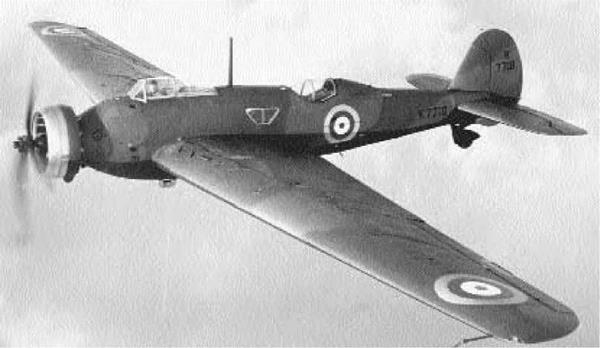
Type: Light Bomber
|
|
Dimensions: wingspan, 74 feet, 7 inches; length, 39 feet, 3 inches; height, 12 feet, 4 inches
Weights: empty, 6,690 pounds; gross, 11,100 pounds
Power plant: 1 x 950-horsepower Bristol Pegasus XX radial engine
Performance: maximum speed, 228 miles per hour; ceiling, 19,680 feet; range, 1,110 miles
Armament: 2 x.303-inch machine guns; up to 2,000 pounds of bombs
Service dates: 1937-1944
he Wellesley was one of the longest-spanned single-engine bombers ever built. It set a world range record in 1938 and helped pioneer the geodetic building techniques applied to the famous Vickers Wellington.
In 1931 a British Air Ministry specification called for a long-range bomber, and Vickers constructed two aircraft. The first was a biplane built in precise conformity to the specification; it proved singularly unimpressive. The second, undertaken as a private venture, was radically different and successful. The new craft was a low-wing monoplane of exceptionally long span and powered by a cowled radial engine. A crew of two sat in separate, fully enclosed canopies. But the most distinguishing feature was its construction. Designers Barnes Wallis and Rex Pierson had previously collaborated on building airship R100 for Vickers and decided to incorporate its geodetic structure into a large aircraft. This technique entailed building a crisscross lattice structure of metal, promoting great strength with very little weight. The fuselage and wings of the new
craft were accordingly built along these lines with impressive results. It proved so superior to the biplane entry that the Air Ministry canceled the old specifications and rewrote them with the new monoplane in mind. In 1937 it entered service as the Vickers Wellesley; 176 were constructed.
By the advent of World War II in 1939, the Wellesley was marginally obsolete, but at least 100 were maintained in and around the Middle East. Many of them dropped bombs on Italian targets during the East African campaign and conducted long – range reconnaissance throughout the western Mediterranean. After 1941 most Wellesleys were declared surplus and scrapped. However, this craft is best remembered for efforts by the RAF Long Range Development Flight. In 1938 three modified Wellesleys took off from Ismailia, Egypt, for Darwin, Australia. Two arrived safely exactly 48 hours later, having covered 7,162 miles in poor weather. This was the greatest distance ever flown in a straight line, and the record remained unbroken until 1945.
|
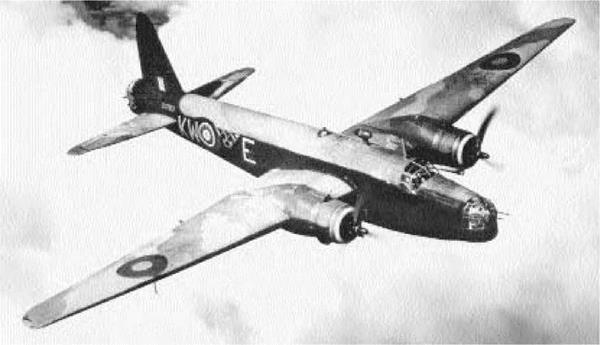
Type: Medium Bomber
|
|
Dimensions: wingspan, 86 feet, 2 inches; length, 64 feet, 7 inches; height, 17 feet, 5 inches
Weights: empty, 18,970 pounds; gross, 34,000 pounds
Power plant: 2 x 1,500-horsepower Bristol Hercules XI radial engines
Performance: maximum speed, 255 miles per hour; ceiling, 19,000 feet; range, 1,540 miles
Armament: 8 x.303-inch machine guns; 4,500 pounds of bombs
Service dates: 1938-1953
he “Wimpy” was built in greater numbers than any other British multiengine aircraft. Its geodetic structure allowed it to absorb extensive damage and keep flying.
In 1932 the British Air Ministry sought development of a new twin-engine heavy bomber and issued Specification B.9/32. A Vickers design team under Barnes Wallis decided to capitalize on prior success with the Wellesley by incorporating the same geodetic construction techniques. The prototype was unveiled in 1936 as a midwing monoplane employing the trademark basket-weave lattice structure in the wings and fuselage, all covered by fabric. The resulting craft was relatively light for its size but phenomenally strong. It was also heavily defended by powered gun turrets in the nose and tail and additional beam positions. The Wellington entered squadron service in 1938 as the most advanced medium bomber in the world. Known as “Wimpy” after a cartoon character, it helped form the backbone of RAF Bomber Command when World War II commenced in 1939.
Wellingtons, in concert with several Bristol Blenheims, made the first British raid of the war when they hit naval targets at Wilhelmshaven on September 4, 1939. However, the practice of daylight bombing, in the teeth of determined fighter opposition, usually resulted in heavy losses. Consequently, a return raid over Wilhelmshaven on December 18 resulted in 10 out of 24 Wellingtons being lost. Thereafter, they were restricted to nighttime operations, and by helping establish the RAF strategy of nighttime saturation bombing, the “Wimpy” made its greatest contribution. Almost impervious to flak, many sustained great damage yet survived. Until the advent of bigger, more capable four-engine aircraft from 1942 on, Wellingtons bore the brunt of strategic bombing with excellent results. Large numbers also served with the RAF Coastal Command throughout the Atlantic and Mediterranean theaters, sinking no less than 26 U-boats. Production totaled 11,462 machines. Many remained in service until 1953, almost three decades after the original specifications had been announced.
|
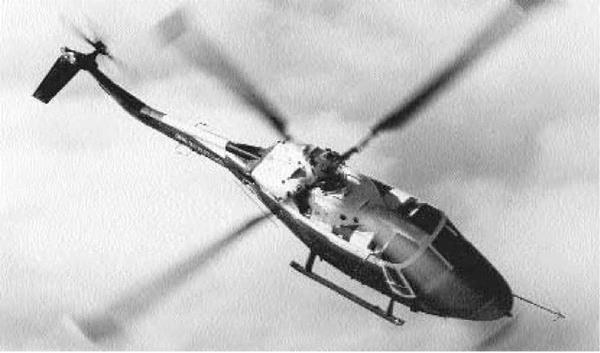
Type: Transport; Antisubmarine; Reconnaissance
|
|
Dimensions: rotorspan, 42 feet; length, 49 feet, 9 inches; height, 12 feet
Weights: empty, 6,772 pounds; gross, 10,750 pounds
Power plant: 2 x 1,135-horsepower Rolls-Royce Gem turboshaft engines
Performance: maximum speed, 159 miles per hour; ceiling, 10,600 feet; range, 392 miles
Armament: 6 x TOW antitank missiles or 6 x Sea Skua antiship missiles
Service dates: 1977-
he versatile Lynx is one of the world’s foremost tactical helicopters. Jointly built by Britain and France, it serves in navies around the world and performs many military functions.
The Lynx can trace its origins to the Westland WG.13, a design submitted in fulfillment of the Anglo-French helicopter accord of 1968. Through this expedient, both countries would jointly build and deploy three basic helicopters. The first two, the Puma and Gazelle, were of entirely French design, but the WG.13 was an original Westland product. It was a sleek pod-and-boom configuration utilizing the new semirigid rotor technology. Thirteen prototypes were built, with the first flying in March 1971. Test results were excellent and revealed the machine to be fast, agile, and extremely acrobatic. Christened the Lynx, it is one of few helicopters in the world that can be routinely looped and rolled in complete safety. Production commenced in 1976, with Britain responsible for 70 percent of the parts and France the remainder.
The Lynx is currently available in two versions. The navy Lynx possesses tricycle landing gear and a rotorhead capable of a negative 6 degrees of pitch that, in effect, “pushes” the machine down on a rolling ship deck to keep it in place. These helicopters are outfitted with advanced avionics that permit all-weather operations while being flown by only one pilot. Furthermore, they are extremely versatile and can fulfill a variety of antisubmarine, antishipping, and surveillance missions. In 1982 Lynxes became the first helicopter to fire Sea Skua missiles in anger when they damaged the Argentine submarine Santa Fe near South Georgia Island. The Royal Navy has acquired 91 of these useful machines; 200 more fly with navies around the world.
The military Lynx version is immediately recognizable by its landing skids. It can carry up to 12 fully armed troops but is usually outfitted with eight TOW missiles and a roof-mounted sight for antitank work. The British army maintains and operates a large fleet of 100 Lynxes.
|
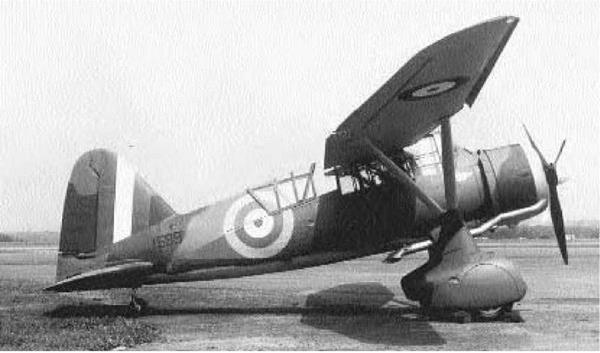
Type: Liaison; Reconnaissance
|
|
Dimensions: wingspan, 50 feet; length, 30 feet, 6 inches; height, 14 feet, 6 inches
Weights: empty, 4,365 pounds; gross, 6,318 pounds
Power plant: 1 x 870-horsepower Bristol Mercury XX radial engine
Performance: maximum speed, 212 miles per hour; ceiling, 21,500 feet; range, 600 miles
Armament: 3 x.303-inch machine guns
Service dates: 1938-1945
ossessing excellent STOL (short takeoff and landing) characteristics, “Lizzie” was a useful liaison and reconnaissance aircraft. It became renowned for its ability to drop off and retrieve secret agents throughout occupied Europe.
In 1934 the British Air Ministry, wishing to replace the aging Hawker Hector biplanes as army cooperation craft, issued Specification A.39/34. It called for a new monoplane aircraft with good STOL characteristics for operating from small fields. Westland entered a design called Lysander, one of the most unique-looking airplanes ever flown by the Royal Air Force. It was a braced monoplane with large, spatted wheels and braced, lozenge-shaped wings. The wings were metal-covered from the leading edge to the main spar, then covered by fabric. Slotted flaps were fitted to the trailing edges, which when deployed allowed the craft to land and take off at speeds as slow as 65 miles per hour. The rotund fuselage consisted of steel tubing and wooden formers, also fabric-covered. The Lysander was somewhat heavily armed for a liaison aircraft, sport
ing two forward-firing machine guns and one for the observer. It entered production in 1938 and equipped several squadrons by the advent of World War II.
In September 1939 Lysanders were deployed to France as part of the British Expeditionary Force. They performed useful reconnaissance and artillery – spotting services as long as the RAF maintained local air superiority. However, commencing with the Battle of France in May 1940, the slow-flying airplanes were easy prey for fast, heavily armed German fighters. They were called upon to perform ground-attack and air-supply missions, often in the teeth of enemy opposition. No less than 112 were lost in a single month, by which time the British had been driven from the continent. Thereafter, new work was found for the “Lizzie” in the form of training and glider-towing. Its ability to land and abruptly depart made it ideal for dropping and retrieving special agents throughout Europe. A total of 1,593 Lysanders were built; all were declared obsolete by
1946.
|
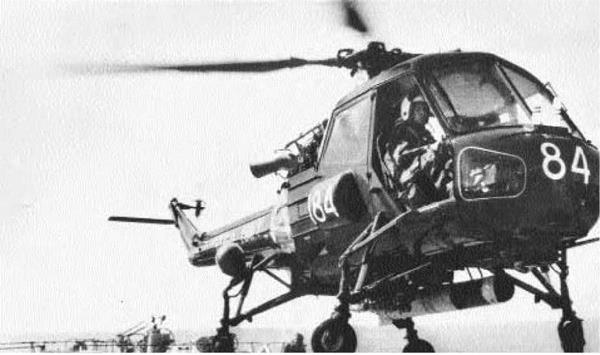
Type: Antitank; Reconnaissance; Antisubmarine
|
|
Dimensions: rotorspan, 32 feet, 3 inches; length, 30 feet, 4 inches; height, 8 feet, 11 inches Weights: empty, 3,452 pounds; gross, 5,500 pounds
Power plant: 1 x 1,050-horsepower Rolls-Royce Nimbus turboshaft engine Performance: maximum speed, 132 miles per hour; ceiling, 12,500 feet; range, 478 miles Armament: 4 x SS.11 antitank missiles or 2 x Mk 44 torpedoes Service dates: 1963-1998
he Scout was a useful light utility helicopter for the British army. A naval derivative, the Wasp, became the first helicopter deployed in large numbers aboard Royal Navy frigates.
Shortcomings of the Saunders Roe Skeeter helicopter induced that company to initiate design of a larger, more capable craft in 1956. Designated P 531, it was a standard pod-and-boom machine with a fully enclosed cabin, large glazed windows, and landing skids. The prototype first flew with good results in 1958, although a more powerful version, the P 531-2, flew the following year. In 1960 Saunders Roe was absorbed by Westland, but work continued apace on the production models, which entered service in 1963 as the Scout.
The British army ordered 150 examples of the AH 1 Scout for use as light utility/liaison aircraft. Despite their small size, Scouts were applauded for strength and reliability in the field. They performed sterling service throughout the 1982 Falkland Is
lands War as reconnaissance and medevac vehicles. Toward the end of their long career, many were outfitted with SS.11 wire-guided missiles for antitank work. By 1994 all had been retired in favor of the more modern Lynx. A solitary example remains in flyable condition at Middle Wallop.
In the early 1960s the Royal Navy needed a standard light helicopter to perform antisubmarine warfare work aboard its frigates. The Scout seemed like a logical place to begin, so a navalized version, the Wasp, was developed in 1962. It differed from army versions mainly in possessing castor landing gear and a folding tail section for shipboard storage. It also employed locking brakes to keep the helicopter from pitching on deck during heavy seas. In service the Wasp flew without sensors, relying instead on sonar findings from its mothership for guidance. The Royal Navy acquired 98 Wasps, with an additional 35 being exported to Brazil, New Zealand, and South Africa. All have been retired since 1998.
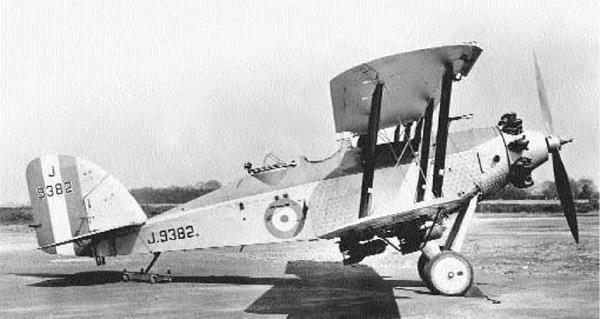
Type: Light Bomber; Reconnaissance
Dimensions: wingspan, 46 feet, 5 inches; length, 32 feet, 6 inches; height, 11 feet, 10 inches
Weights: empty, 3,280 pounds; gross, 5,400 pounds
Power plant: 1 x 460-horsepower Bristol Jupiter VI radial engine
Performance: maximum speed, 140 miles per hour; ceiling, 20,600 feet; range, 360 miles
Armament: 2 x.303-inch machine guns; up to 580 pounds of bombs
Service dates: 1927-1939
he inelegant Wapiti was Westland’s first airplane and a stalwart machine of the 1930s. They served conspicuously throughout the empire and final variants even overflew Mount Everest.
As the 1920s drew to a close, the British Air Ministry decided that new aircraft were needed to better maintain order throughout the British Empire. Specification 26/27 was therefore issued, calling for a new general-purpose aircraft. As a cost-cutting expedient, it also mandated that the winning candidate would utilize as many parts of the old de Havilland DH 9a as possible. Fortunately, Westland had constructed DH 9s during 1916-1918, and in 1927 a Westland prototype beat out six other competitors to win a government contract. The new craft, called the Wapiti, used the same wings, interplane struts, and tail unit as the DH 9a. However, they were wedded to a new, much deeper fuselage. Once fitted to a 420-horsepower Bristol Jupiter VI radial engine, the new craft flew exceedingly well, and in 1927 the first 25 aircraft were delivered.
In service the Wapiti proved to be a rugged, functional design that went through five marks in five years. The most significant of these was the Mk II, which introduced an all-metal framework. Wapitis flew the length and breadth of the British Empire, serving as army cooperation planes, light bombers, and reconnaissance craft. In fulfilling these duties there evolved a seaplane Wapiti on twin floats, an Arctic Wapiti with skis, a long – range Wapiti with additional fuel tanks for desert patrol, and the Wapiti trainer with dual controls. By the time production ceased in 1932, 521 machines had been constructed for the Royal Air Force, with another 500 exported to other countries. Commencing in 1932 around 80 Wapitis were upgraded to a successive model, the Wallace, with lengthened fuselages and bigger engines. On April 3, 1932, two of these aircraft climbed to 29,026 feet and ranged over Mount Everest in the Himalayas. The last Wapitis were finally retired in 1939.
|
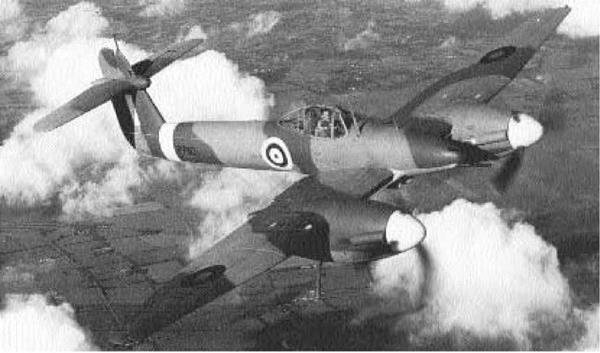
Type: Fighter; Light Bomber
|
|
Dimensions: wingspan, 45 feet; length, 32 feet, 9 inches; height, 11 feet, 7 inches Weights: empty, 8,310 pounds; gross, 11,388 pounds
Power plant: 2 x 885-horsepower Rolls-Royce Peregrine liquid-cooled in-line engines Armament: 4 x 20mm cannons; up to 1,000 pounds of bombs Service dates: 1940-1943
he futuristic, spectacular Whirlwind was one of Britain’s most conspicuous aviation failures of World War II. Conceived as a fast and hard-hitting escort fighter, it flew well but suffered from insurmountable engine problems.
In 1935 the Air Ministry issued the highly secret Specification F.37/35 to obtain the world’s first twin- engine, single-seat fighter. Moreover, the new design was also intended to be the world’s first cannonarmed fighter. A Westland design team under W. E.W. “Teddy” Petter conceived a very advanced solution the following year, and the government quietly issued a contract for two prototypes. The first ones flew in September 1938, being among the most advanced warplanes of the time. The Whirlwind appeared radically different from contemporary fighters. It possessed a long fuselage, the cross-section being less than those of the engine nacelles. Moreover, the wing was set far forward on the fuselage, and the distinct, cruciform tail sat high in the rear. It was also one of the first fighters to possess a bubble canopy for unimpeded all-around vision. The aircraft was formidably armed with four 20mm concentrated cannons,
closely packed together in the nose, for unprecedented firepower. The Whirlwind displayed excellent range and maneuverability, and thus, in great secrecy, the government decided to produce them in quantity.
In view of its great potential, the Whirlwind proved a major disappointment. The problem source was the Roll Royce Peregrine engines, which were unreliable, low-powered, and required high maintenance time. The Whirlwind also exhibited high landing speeds, despite the presence of Fowler flaps, which rendered it unsuitable for a majority of British airfields. Ultimately, 112 were constructed and equipped only two squadrons. Commencing in 1941, Whirlwinds performed useful work as escort fighters and subsequently distinguished themselves as low-level fighter-bombers. Their specialty was a cross-channel foray dubbed the “Rhubarb.” Roaring in low and fast, Westland fighters appeared suddenly and wreaked havoc on enemy transportation and railway systems. But in view of mechanical unreliability, their operational days were limited. By 1943 all were replaced by the initially temperamental, but ultimately more successful, Hawker Typhoon.
|
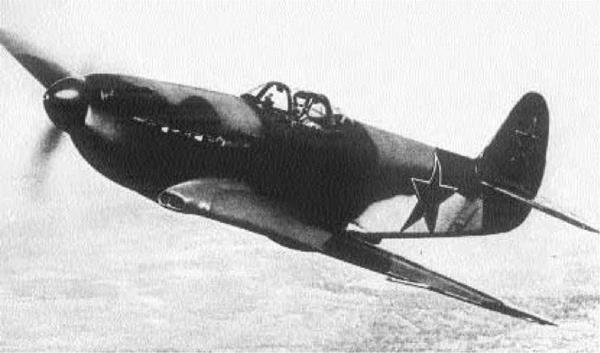
Type: Fighter
|
|
Dimensions: wingspan, 30 feet, 2 inches; length, 27 feet, 10 inches; height, 7 feet, 11 inches Weights: empty, 4,641 pounds; gross, 5,864 pounds
Power plant: 1 x 1,300-horsepower VK 105PF liquid-cooled in-line engine Performance: maximum speed, 407 miles per hour; ceiling, 35,105 feet; range, 559 miles Armament: 2 x 12.7mm machine guns; 1 x 20mm cannon Service dates: 1944-1946
he Yak 3 was a highly successful low-altitude interceptor during World War II. It sprung from a family of fighters renowned for their maneuverability, and German pilots were warned to avoid it.
In late 1942 attempts were made to wring even better performance out of existing Yak fighters. Russian aircraft performed better at low altitude than their German counterparts, but the latter were generally faster. Because the majority of air battles along the Eastern Front were waged at low altitude, the Red Air Force wanted a weapon that would ensure air superiority close overhead. Consequently, a Yak 1M fuselage was modified to accept an advanced VK 107 engine. To accomplish this, the already light frame was lightened even further, and special care was taken to reduce drag through streamlining. The most notable modification was moving the bulky chin oil cooler to the wing roots. The fuselage was also cut down toward the rear and a simple bubble canopy installed. Finally, a smaller
wing was fitted, and armament was pared down to save weight. When teething problems delayed the availability of the VK 107 engine, the existing VK 105PF was substituted. In service the new fighter, designated the Yak 3, proved an even better dog – fighter than its more numerous Yak 9 stablemates.
Yak 3s made their appearance in the summer of 1944 and were strikingly successful. Not only could they outturn Messerschmitt Bf 109s and Focke-Wulf Fw 190s at low altitude, the new Yaks climbed and accelerated faster. In the hands of skilled pilots it proved deadly. On July 14, 1944, eight Yak 3s encountered 60 enemy aircraft and claimed three Junkers Ju 88s and four Me 109s without loss. In another swirling engagement, 18 Yak 3s tangled with 30 Bf 109s, downing 15 with the loss of a single plane. The Germans quickly took stock of this streamlined dervish and advised pilots to avoid Yak 3 fighters below 16,000 feet. A total of 4,848 were built.
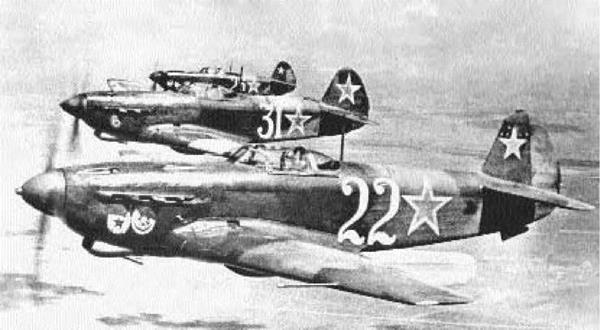
Type: Fighter
Dimensions: wingspan, 32 feet; length, 28 feet; height, 9 feet, 8 inches Weights: empty, 5,988 pounds; gross, 6,830 pounds
Power plant: 1 1,650-horsepower Klimov VK 107A liquid-cooled in-line engine Performance: maximum speed, 434 miles per hour; veiling, 39,040 feet; range, 541 miles Armament: 2 x 12.7mm machine guns; 1 x 20mm cannon; up to 220 pounds of bombs Service dates: 1942-1950
he Yak 9 was the Soviet Union’s most numerous and important wartime fighter during 1942-1945. It helped to wrest away air supremacy from German invaders and facilitated the ultimate Russian victory.
Responding to a 1939 Soviet directive for new fighters, young Alexander Yakovlev originated a promising design, while attempting to build the smallest possible airframe around a powerful VK 105 engine. It was built of steel tubing and covered with wood. First flown in 1940, the craft handled extremely well and was rushed into production as the Yak 1. Latter models eventually acquired a lower fuselage and a bubble canopy for better vision. From there the new Yak 7 evolved, incorporating lighter construction and additional fuel. It retained the fully enclosed, old-style canopy and served mainly in ground-attack roles. Both fighters did valuable work blunting the German aerial onslaught, but by 1942 a newer version was needed to acquire air superiority. Thus was born the Yak 9, which, numerically speaking, was the largest and
most important member of this burgeoning family of aircraft.
The Yak 9 was essentially a lightened version of the earlier Yak 7, although fitted with the Yak 1’s bubble canopy. A smaller wing with metal spars was also fitted, along with revised tail surfaces and a retractable tailwheel. Moreover, it featured metal skinning instead of wood, as well as additional streamlining. Yak 9s debuted during the 1942 Battle of Stalingrad and demonstrated marked superiority over Messerschmitt Bf 109s at low altitude. This ruggedly versatile craft was subsequently adopted for an entire range of activities, including long-range escort and tankbusting. By 1943 the second generation of Yak 9s appeared with stronger engines and a higher proportion of metal parts. These also sported a redesigned fuselage and bigger wings and proved to be the most maneuverable members of the series. Yak 9s remained in service until about 1950. Total production of this variant reached 16,769 out of a grand total of 30,000 Yak machines.
|
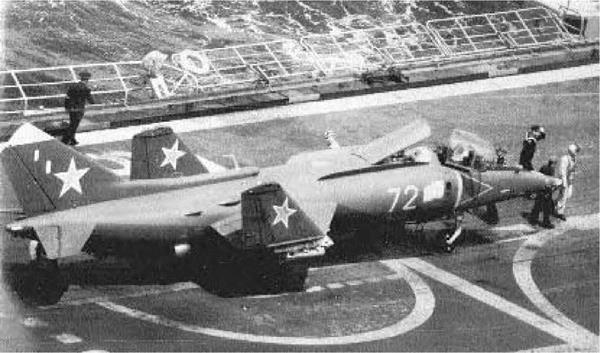
Type: Fighter
|
|
Dimensions: wingspan, 24 feet; length, 50 feet, 10 inches; height, 14 feet, 4 inches Weights: empty, 16,501 pounds; gross, 25,794 pounds
Power plant: 1 x 14,991-pound thrust NMPK turbojet; 2 x 7,175-pound thrust RKBM turbojet Performance: maximum speed, 627 miles per hour; ceiling, 39,370 feet; range, 230 miles Armament: up to 2,200 pounds of air-to-air missiles Service dates: 1976-
he complicated Yak 36 remains the Russian navy’s lone operational shipborne attack craft. It operates on the same principle as the more famous British Harrier, although it is lacking in payload and sophistication.
Throughout the late 1950s and into the 1960s, Russia and Great Britain experimented heavily with VTOL (vertical takeoff and landing) aircraft for military applications. By 1969 the British arrived at a viable solution by deploying the British Aerospace Harrier, the world’s first VTOL attack craft. Russian efforts, by comparison, were conducted with much less imagination. They did not field a working prototype until 1967 with the appearance of a Yakovlev bureau prototype designated FREEHAND by NATO. It was a crude, if functional, machine compared to the sophisticated Harrier, apparently constructed as a testbed for follow-on designs. The pace of Yakovlev’s research increased by 1969, when construction of the Soviet Union’s first VTOL-dedicated aircraft carrier, the Kiev, commenced. However, it was not until 1976 that the Kiev sailed with a com
pliment of new Yak 36 fighters as standard equipment. Around 100 were apparently built, receiving the NATO designation FORGER.
Despite outward similarities to the Harrier, the Yak 36 is more primitive and less capable. It employs a main thrust engine for both vertical and horizontal flight, assisted by two smaller engines during liftoff. The engines are arrayed in vectoring nozzles, two forward and two aft. Thus configured, the Yak 36 cannot make conventional takeoffs from a carrier deck, lacking forward thrust. It is therefore constricted to fuel-consuming vertical-lift operations. Neither does the FORGER employ wingtip nozzles like the Harrier, making it incapable of such dazzling maneuvers as vectored thrust in combat (“viffing”). For all its limitations, the Yak 36 is still a viable shipborne strike aircraft, much better armed than the helicopters most Russian ships employ. It certainly represents a threat to unarmed maritime reconnaissance craft like the Orion and Nimrod. The Yak 36 apparently remains an interim type, pending arrival of a more advanced successor.
|
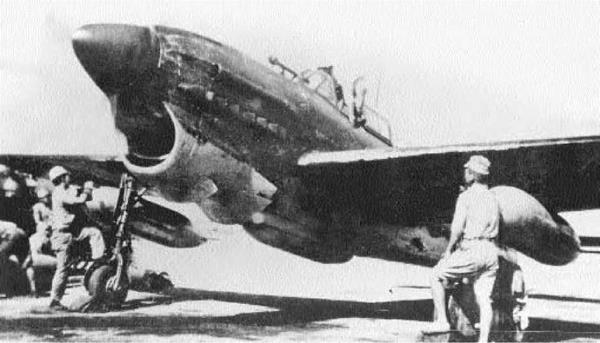
Type: Dive-Bomber; Reconnaissance
|
|
Dimensions: wingspan, 37 feet, 8 inches; length, 33 feet, 6 inches; height, 12 feet, 3 inches Weights: empty, 5,514 pounds; gross, 10,267 pounds
Power plant: 1 x 1,400-horsepower Aichi AE1P Atsuka liquid-cooled in-line engine Performance: maximum speed, 357 miles per hour; ceiling, 34,450 feet; range, 945 miles Armament: 2 x 7.7mm machine guns; 1 x 12.7mm machine gun; 1,234 pounds of bombs Service dates: 1943-1945
he D4Y was the fastest carrier-based dive – bomber of World War II. Although suffering from lack of armor and armament, it also fulfilled reconnaissance, night-fighter, and kamikaze functions.
In 1937 the Imperial Japanese Navy staff requested a replacement for its Aichi D3A dive – bombers. They approached the design staff at the Yokosuka Naval Air Arsenal with stringent requirements that included a 1,380-mile range, a 550-pound payload, and a top speed of 320 miles per hour. This was a departure from prevailing norms, for most dive-bombers were by necessity relatively slow, stable machines. To meet these new specifications, it was decided to employ a relatively small fuselage powered by an in-line engine. The power plant chosen was the Aichi Atsuka, a licensed copy of the Daimler-Benz DB 600. The prototype D4Y first flew in November 1940 as a sleek, all-metal, midwing monoplane. It had a pointed outline, a long canopy seating two crew members, and was stressed for catapult operations. The craft was fast and handled
well, but it suffered from chronic engine problems. Two more years of development followed before a handful of preproduction models served aboard the carrier Soryu in 1942. They functioned as highspeed reconnaissance craft and were lost when the Soryu sank at Midway in June 1942. It was not until 1943 that the persistent engine problems were resolved and mass production commenced. Eventually the D4Y Suisei (Comet) gained the Allied designation Judy.
Several hundred D4Ys were deployed on nine Japanese carriers by the fall of 1944 and experienced their baptism of fire off Truk. There, and in a host of successive encounters, Judys performed well but were inevitably intercepted by hordes of U. S. fighters without ever reaching their targets. Lacking self-sealing tanks and armor, they also proved extremely vulnerable to attack. Nonetheless, new CR models were introduced with a more reliable radial engine; kamikaze and night-fighter versions were also deployed. A total of 2,319 D4Ys were built.
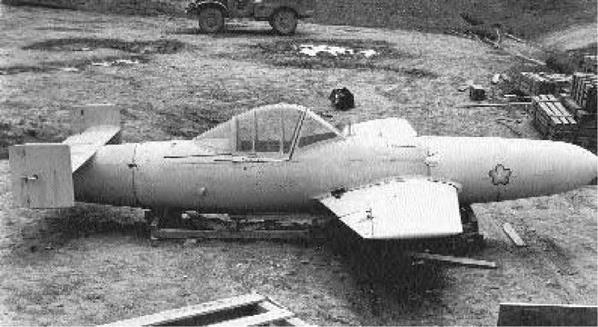
Type: Suicide Craft
Dimensions: wingspan, 16 feet, 9 inches; length, 19 feet, 11 inches; height, 3 feet, 9 inches Weights: empty, 970 pounds; gross, 4,718 pounds
Power plant: 3 x Type 4 MK1 rocket motors with 1,765 pounds of thrust Performance: maximum speed, 535 miles per hour; range, 23 miles Armament: 2,646 pounds of explosives Service dates: 1945
orn out of Japan’s desperation to stem the Allied march through the Pacific, the Oka was a hideously ingenious and potentially formidable weapon. It might have wreaked havoc on Allied forces had the bombers carrying them been able to penetrate American fighter screens.
By the summer of 1944 Japanese military planners were beginning to sense futility in defending the empire against the Allied onslaught. Navy Ensign Mitsuo Ohta then conceived of an idea that was at once simple and barbaric. He proposed creating a small manned aircraft, part glider and part rocket, that could be released near an objective and destroy itself in the finest tradition of kamikaze warriors. That fall the Yokosuka Naval Air Arsenal constructed a functioning prototype of what came to known as the MXY 7 Oka. The name, which means “Cherry Blossom,” was chosen for the traditional reverence shown it by samurai warriors: Both were expected to enjoy lives that were brilliant—and brief. It was a small gliding platform made from wood and metal, fitted with stubby wings and twin rudders. However, once powered by three small rocket motors, it could
streak toward targets at speeds in excess of 500 miles per hour. Moreover, the Oka packed nearly
3,0 pounds of high explosives in the nose, which detonated on contact. The most ghoulish feature was that pilots were sealed into their cockpit before launching without any thought of survival. It was envisioned that fleets of such destructive craft, in concert with more conventional propeller-driven kamikazes, would convince the United States not to invade Japan or sign a more favorable peace treaty. By the spring of 1945 more than 800 MXY 7 Okas had been assembled. The Allies came to know them as Baka, the Japanese term for “idiot.”
The Okas were first deployed in March 1945, when 16 specially rigged G4M bombers approached the U. S. fleet. However, most were shot down by Navy fighters, and the Okas that did manage to be launched were too distant to be effective. Other attacks were more successful, and an MXY 7 sank the destroyer USS Mannert L. Abele in April 1945. Fortunately, the war ended before more lives, Japanese and American alike, could be claimed by such insidious technology.
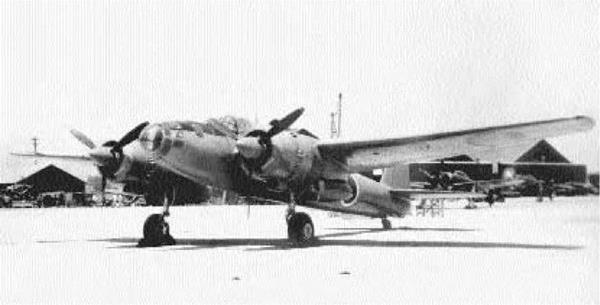
Type: Medium Bomber; Torpedo-Bomber; Dive-Bomber
Dimensions: wingspan, 65 feet, 7 inches; length, 49 feet, 2 inches; height, 14 feet, 1 inch
Weights: empty, 16,017 pounds; gross, 29,762 pounds
Power plant: 2 x 1,820-horsepower Nakajima NK9B Homare radial engines
Performance: maximum speed, 340 miles per hour; ceiling, 30,840 feet; range, 3,337 miles
Armament: 2 x 20mm cannons; up to 2,205 pounds of bombs or torpedoes
Service dates: 1945
he P1Y1 was a fine multimission aircraft in the tradition of the Junkers Ju 88 and de Havilland Mosquito. However, it remained plagued by teething problems and mechanical unreliability.
In 1940 the Japanese naval staff established demanding specifications for a new high-speed medium bomber. The craft had to be capable for level-bombing, dive-bombing, and torpedo-bombing while possessing great speed, range, and armament. It fell upon a design team headed by Tadanao Mit – suzi and Masao Yamana to formulate the design into a functioning prototype. This took three years to accomplish, and it was not until 1943 that the first P1Y1 took flight. It was an extremely clean, appealing machine, with a streamlined fuselage, cowls, and tapering wings. More important, it was fitted with self-sealing fuel tanks and armor for the crew of three. Test pilots marveled at the big machine’s speed and maneuverability, but ground crews grumbled over its complex hydraulics and unreliable
Homare radial engines. At this stage in the war, Japan very much needed a more capable bomber, so the navy elected to commence production before persistent design flaws had been corrected. Machines rolled off the assembly line up through 1944, but not a single P1Y1 Ginga (Milky Way) was accepted into service until properly debugged. By the time this transpired in January 1945, the Japanese Empire was in dire straits indeed. Around that time it received the Allied designation Frances.
In service the P1Y1 proved something of a mixed blessing. When running properly it was fast, extremely robust, and able to outrun Allied fighters at low altitude. However, operations were bedeviled by shoddy workmanship, a lack of trained mechanics, and spare-parts shortages. At length it became necessary to adapt the P1Y1 as a night fighter, but it lacked the necessary performance at high altitude. Many were thus expended as kamikazes. A total of 1,098 were built.
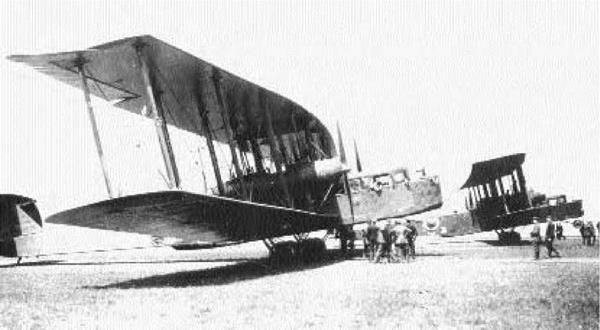
Type: Heavy Bomber
Dimensions: wingspan, 138 feet, 5 inches; length, 72 feet, 6 inches; height, 20 feet, 8 inches Weights: empty, 17,426 pounds; gross, 26,066 pounds
Power plant: 4 x 245-horsepower Maybach Mb IV liquid-cooled in-line engines Performance: maximum speed, 84 miles per hour; ceiling, 14,170 feet; range, 800 miles Armament: 7 x 7.92mm machine guns; up to 4,409 pounds of bombs Service dates: 1917-1918
he gigantic, lumbering Zeppelin Staaken R bombers were the most remarkable aircraft of World War I. They raided England with impunity and hoisted some of the largest bombs dropped in that conflict.
As early as 1915 the famous Count Ferdinand Zeppelin expressed interest in Riesenflugzeug (giant aircraft) as possible weapons; that year, in concert with engineers Gustav Klein and Helmut Hirth, a factory was founded at a field provided by the Gothaer Waggonfabrik firm. The following year the company reestablished itself as the Zeppelin Werke Staaken outside of Berlin. For two years the count and his cohorts developed numerous R-class prototypes with varying degrees of success. It was not until June 1917 that the first production model, the R VI, emerged. It was a huge, multibay biplane with a slab-sided fuselage and a large biplane tail assembly. The R VI was powered by no less than four Maybach engines positioned in tandem cowls, with two pushers and two
tractors per side. A crew of seven was carried, including two pilots who were seated in a fully enclosed cabin. The R VI was so large that its landing gear utilized no less than 16 wheels, grouped in fours, under the wing. A smaller set of nosewheels was also employed to prevent noseovers upon landing. All told, the R VIs were crude but perfectly functional strategic bombers. A total of 18 were acquired, bringing the entire number of R types constructed to 32.
The R VIs began operations against France and England in the summer of 1917. They raided London several times and, on one occasion, delivered a bomb weighing 2,205 pounds—the heaviest dropped during the entire war. Surprisingly, no R ship was ever shot down during 28 raids over England, although several were lost in accidents. Two were subsequently downed on the continent, but by war’s end the R VIs enjoyed a higher percentage of successful raids than their more famous Gotha rivals. This was a formidable warplane in its day.
![]()
